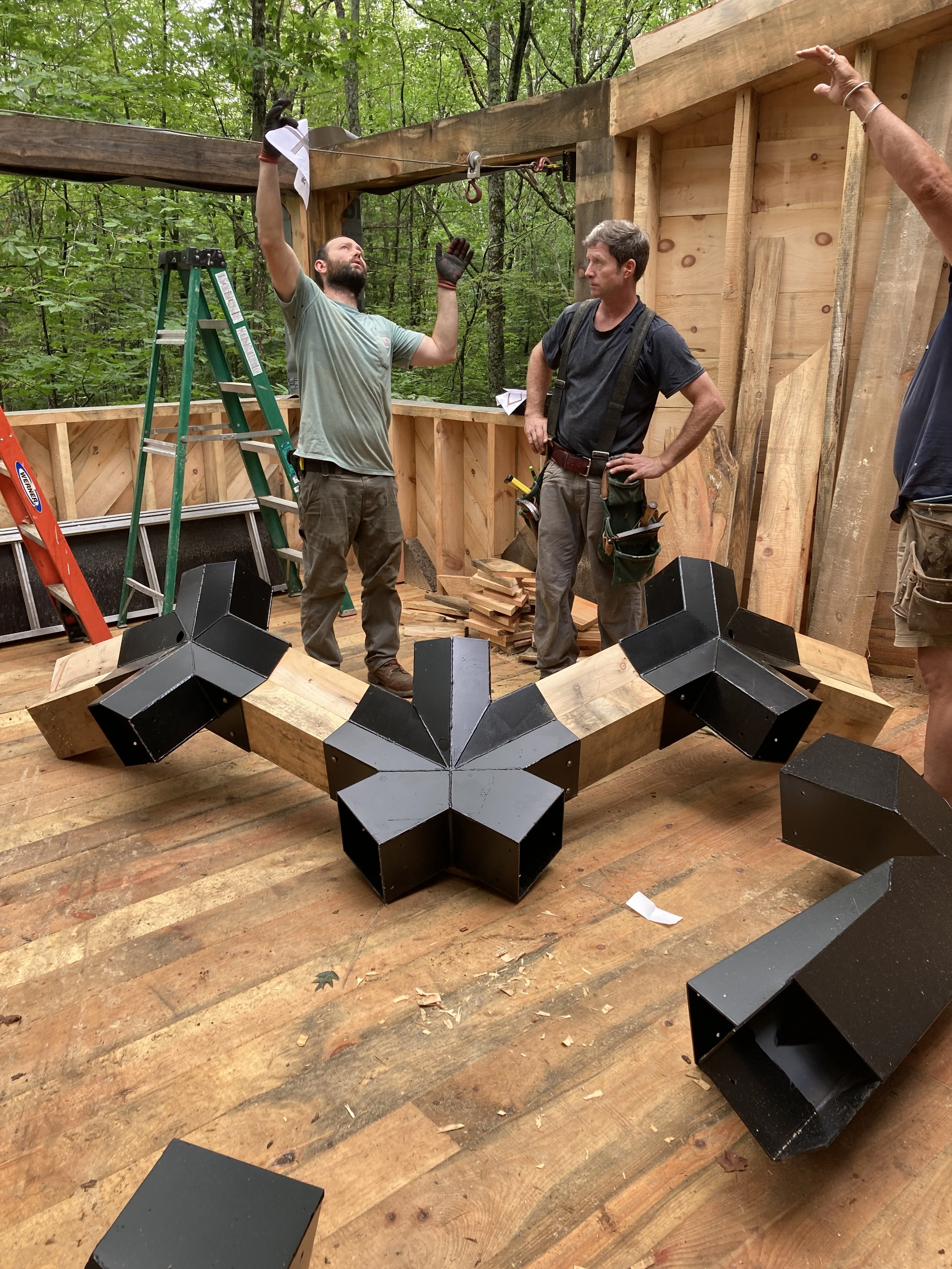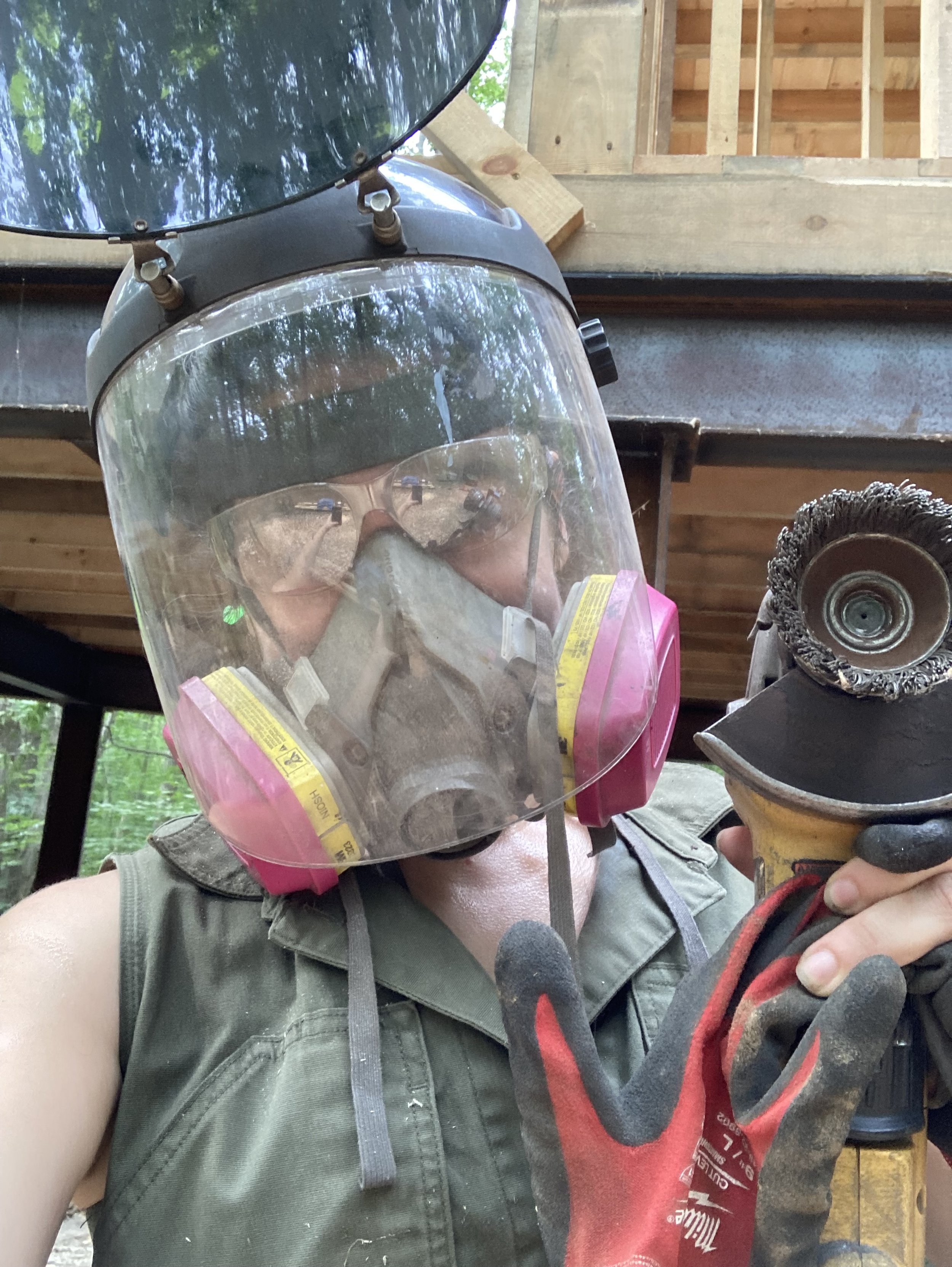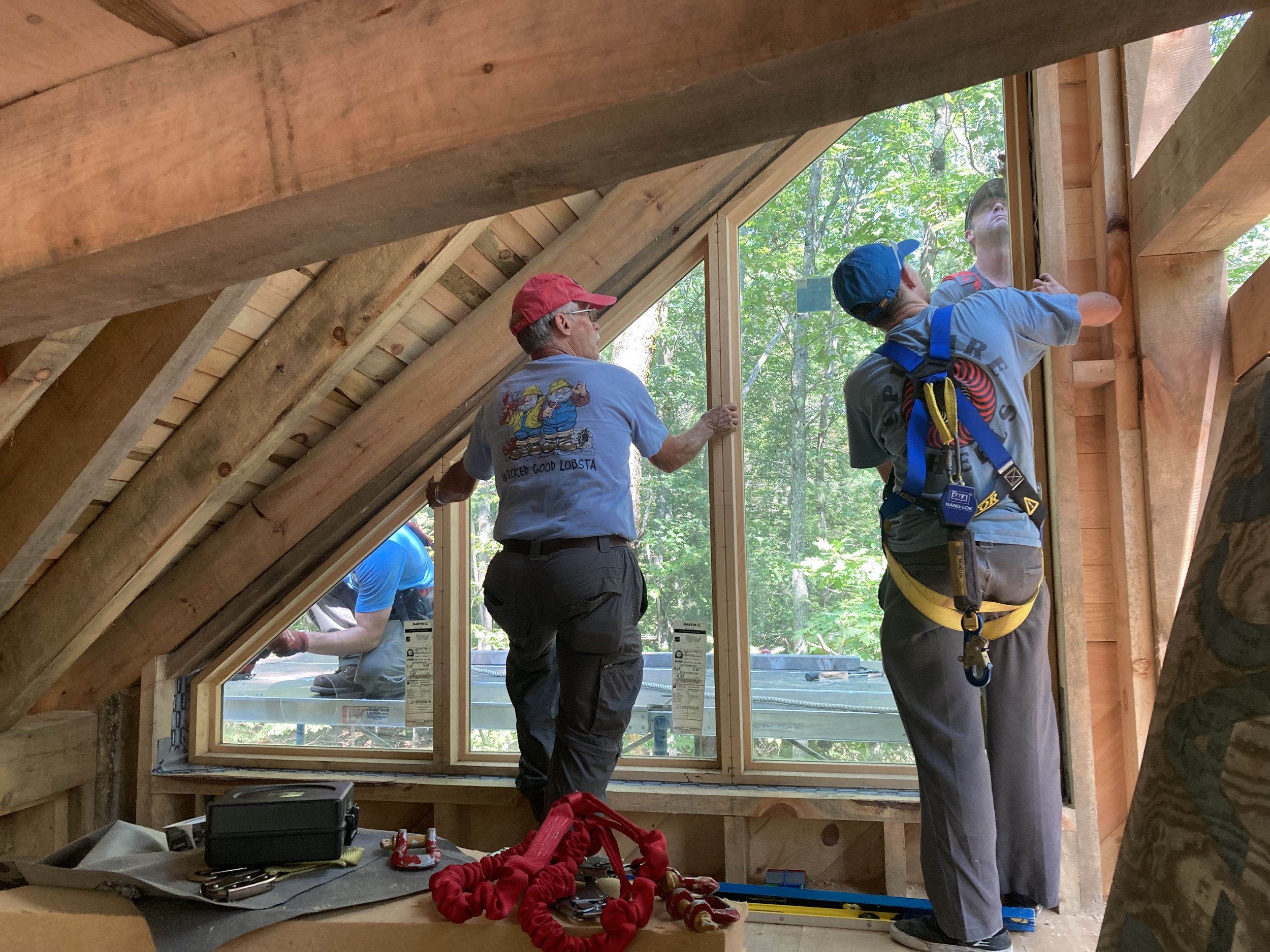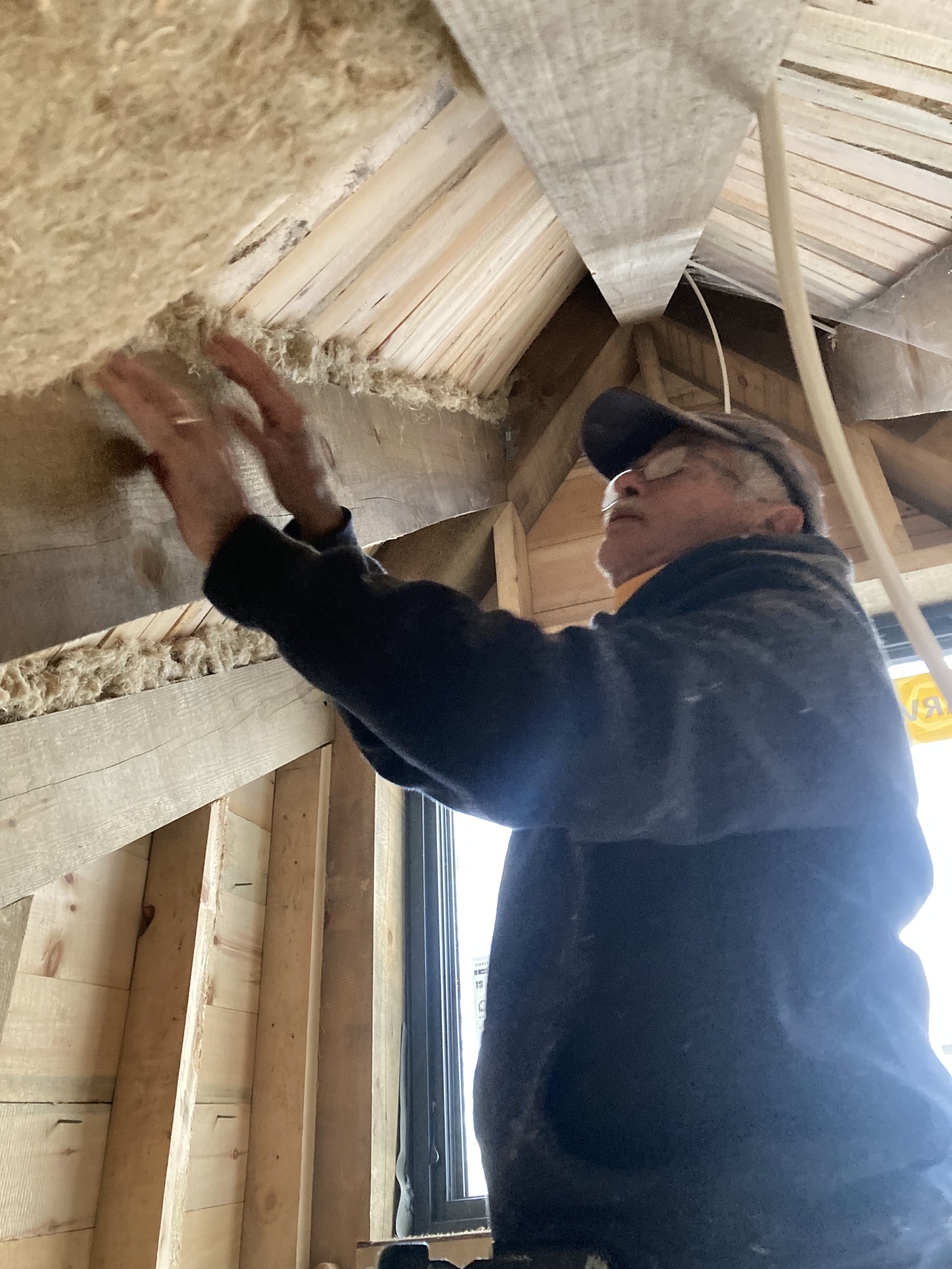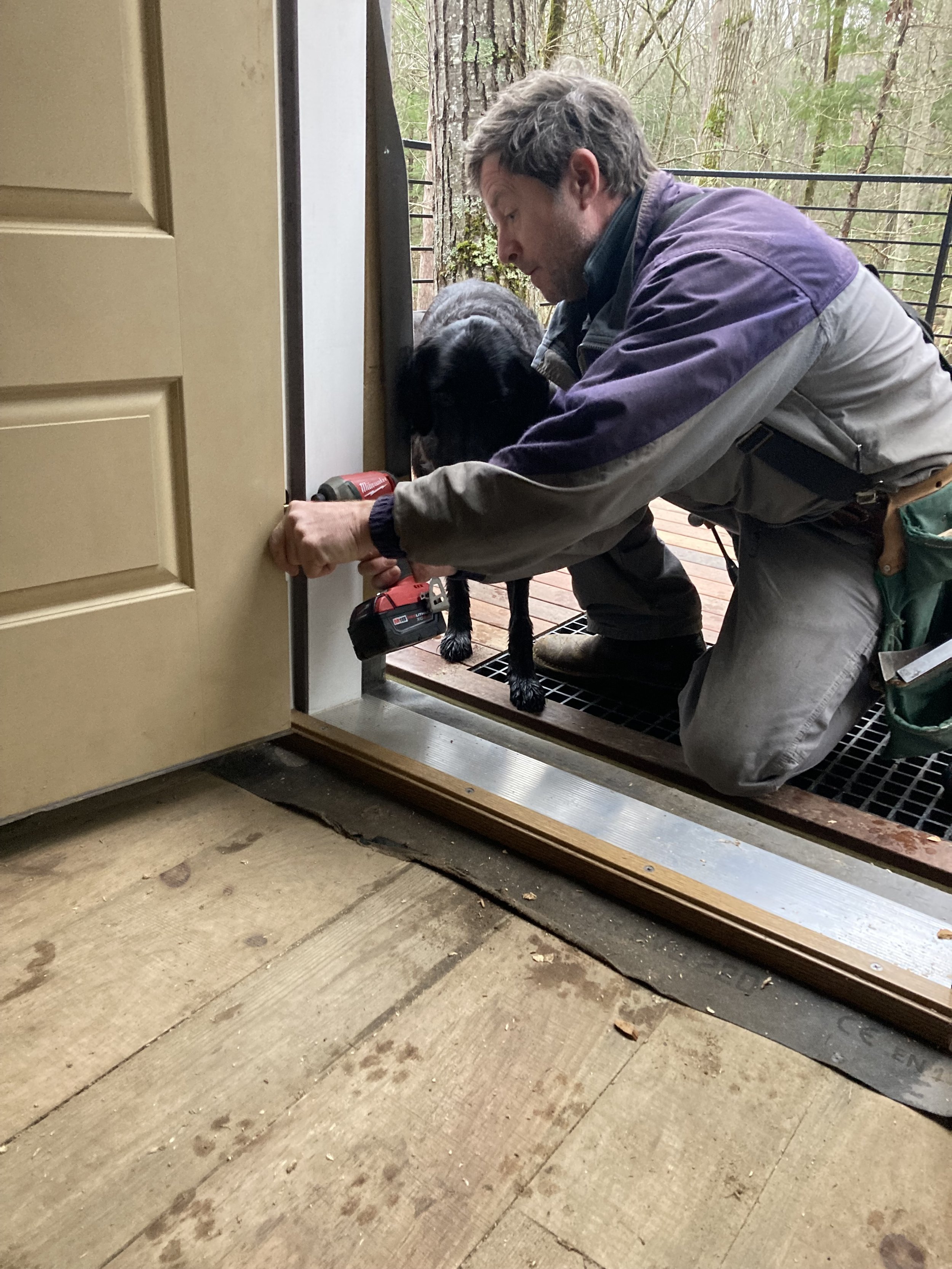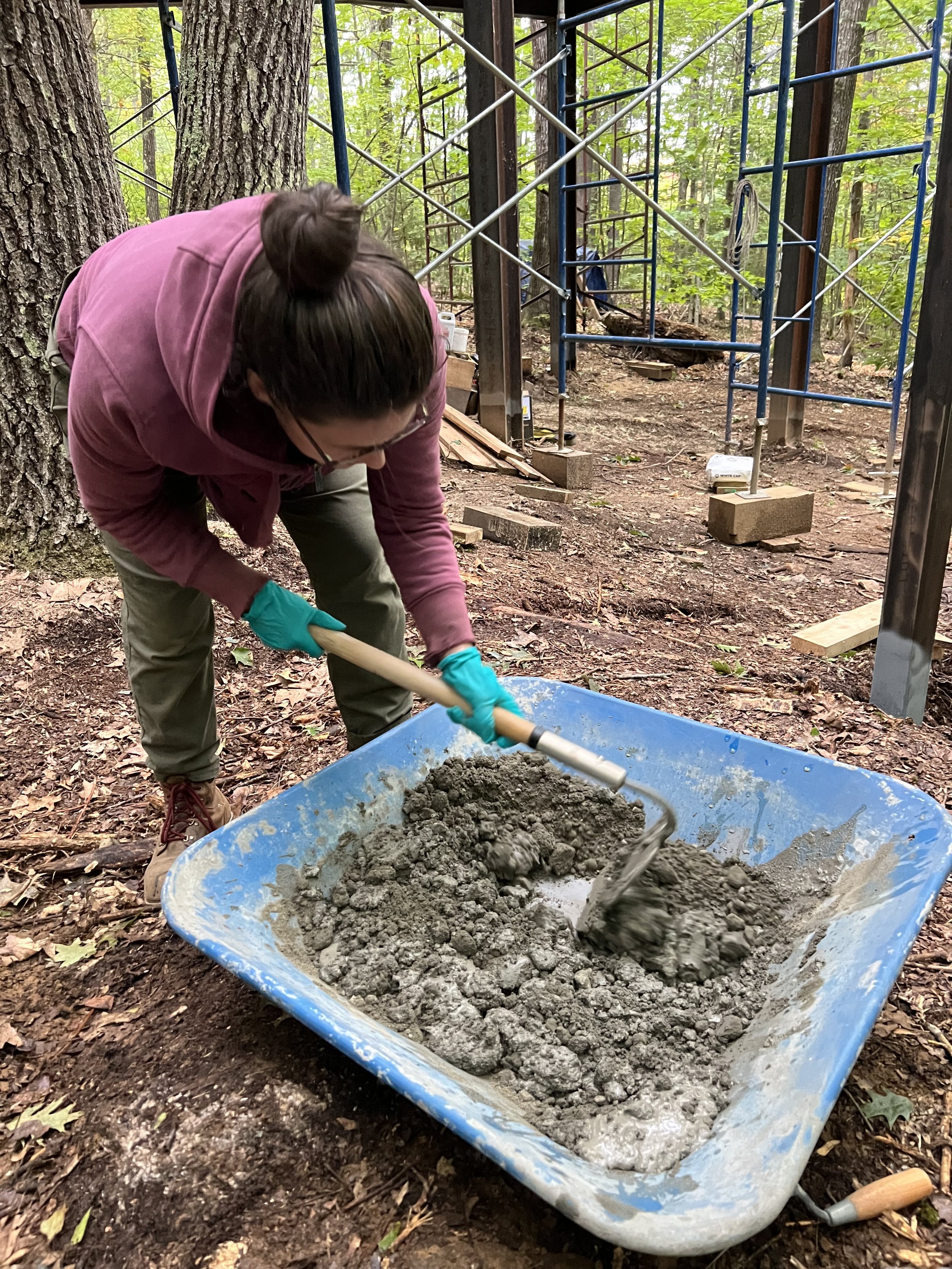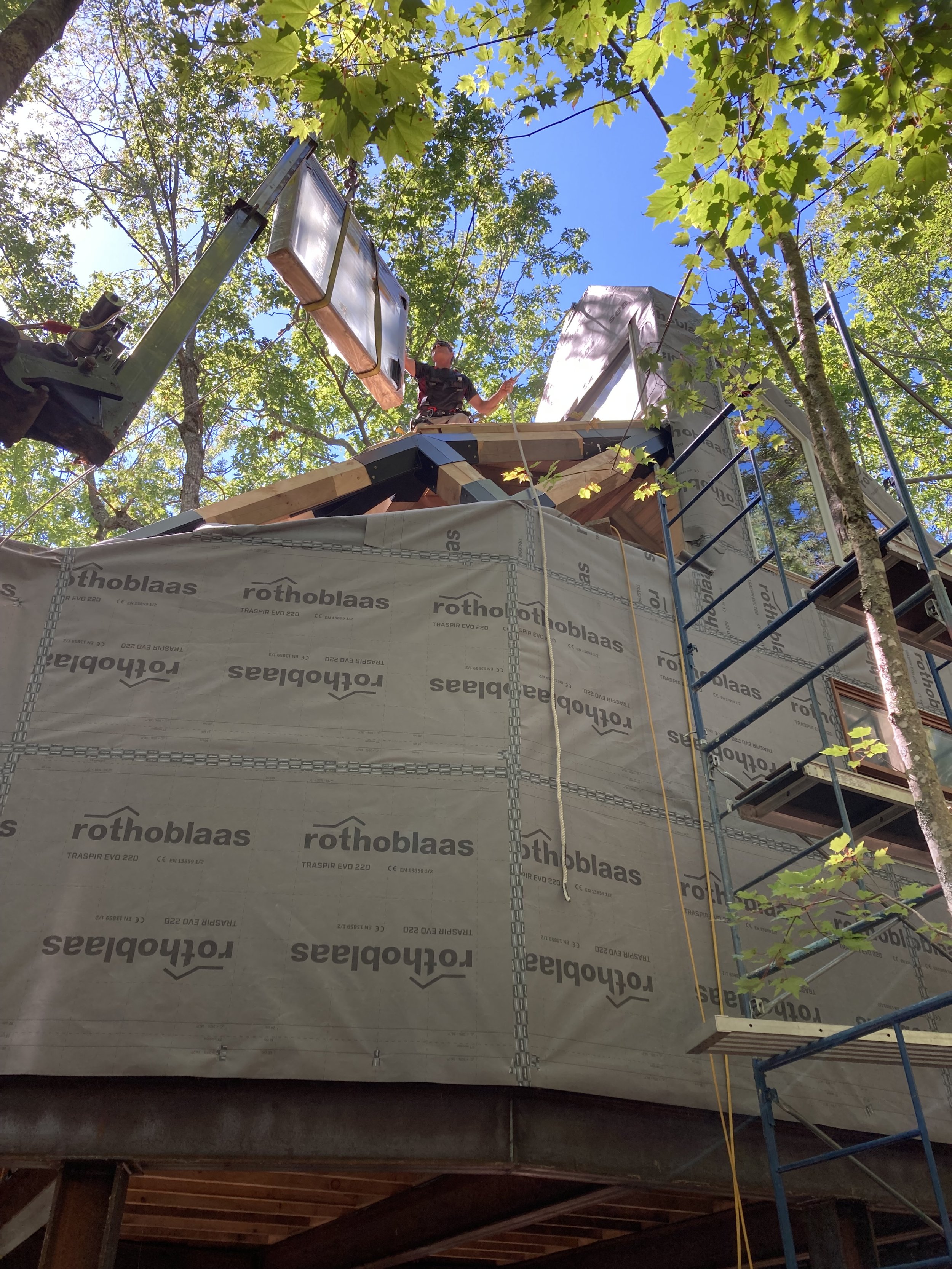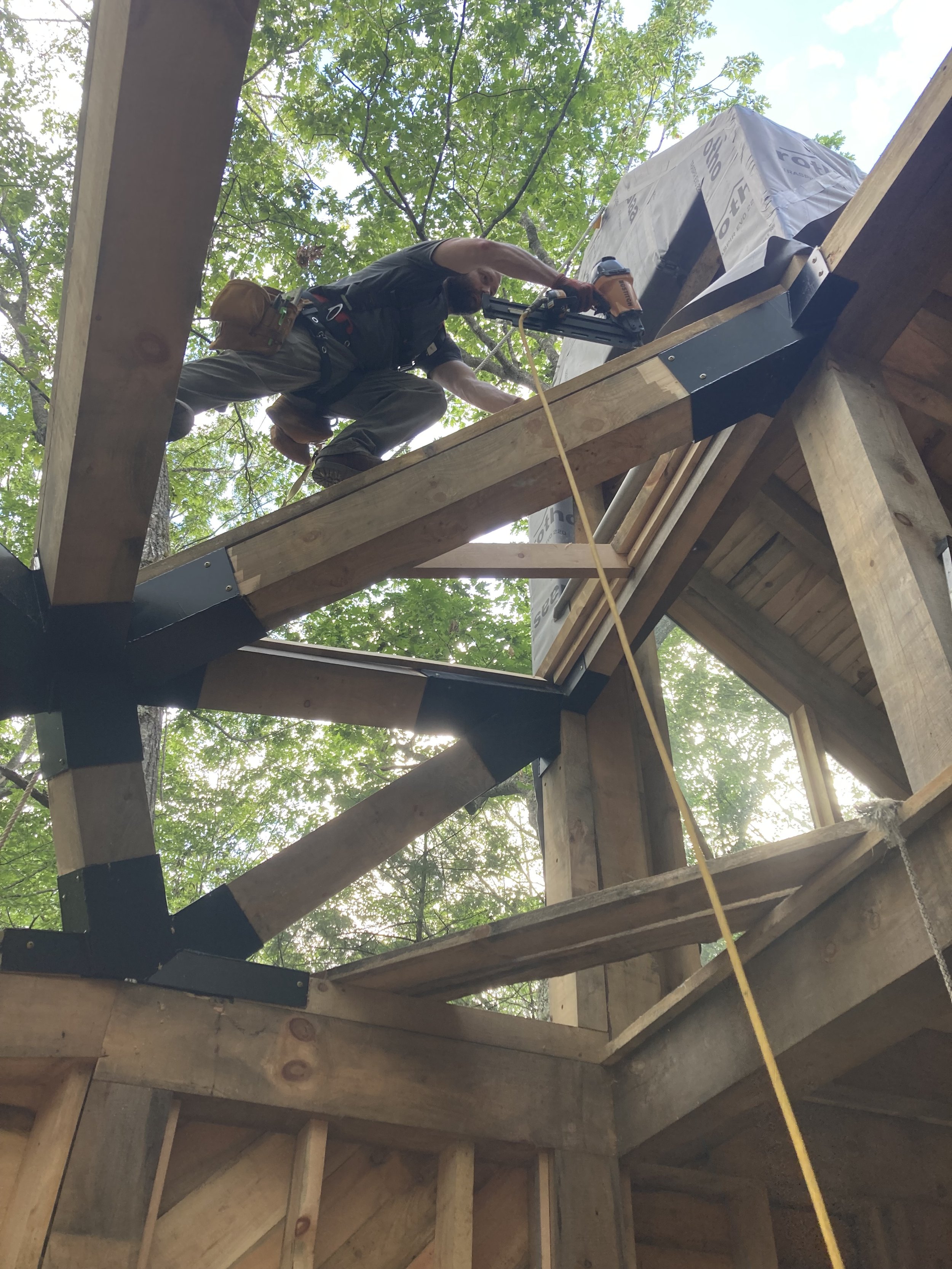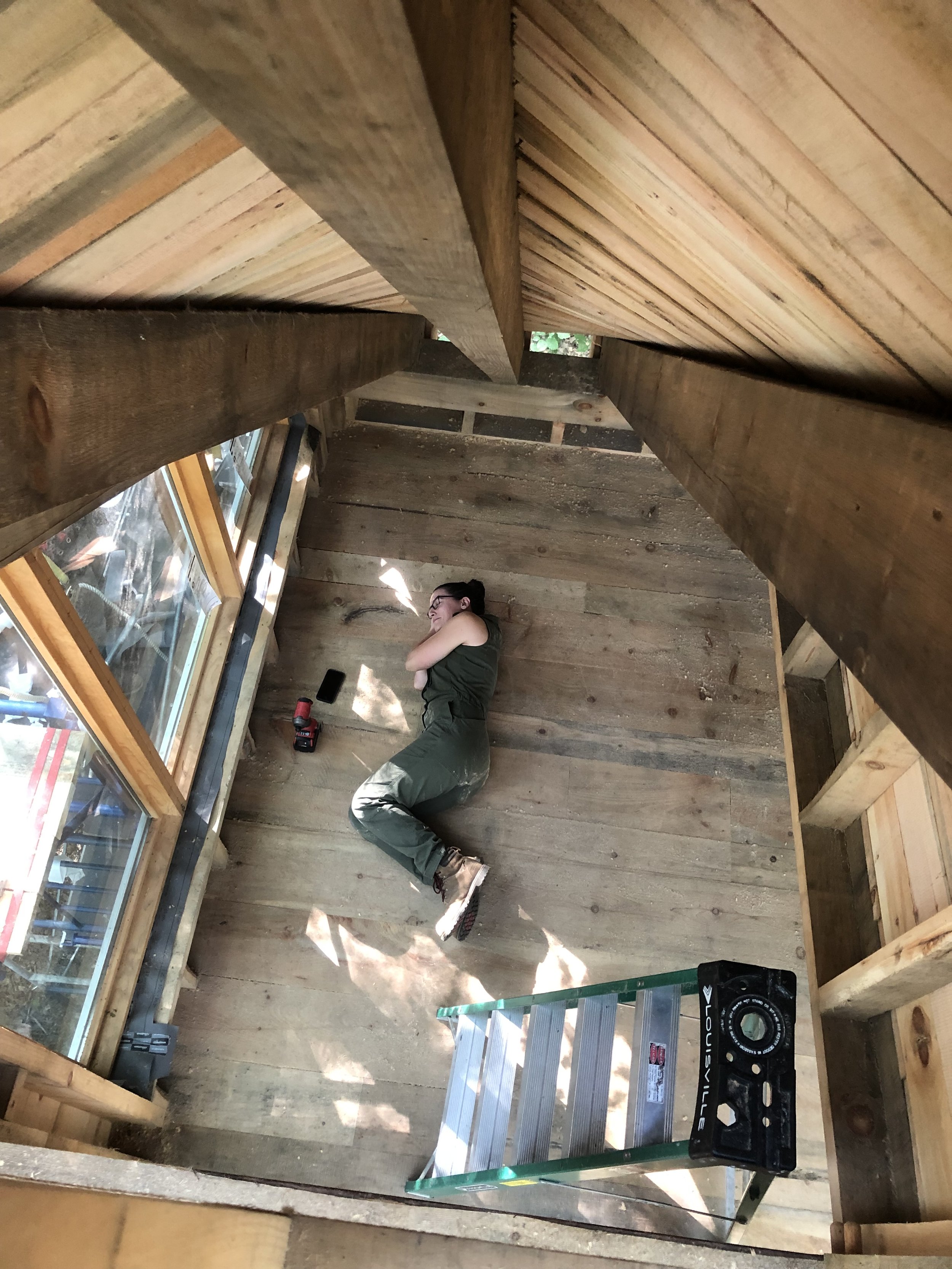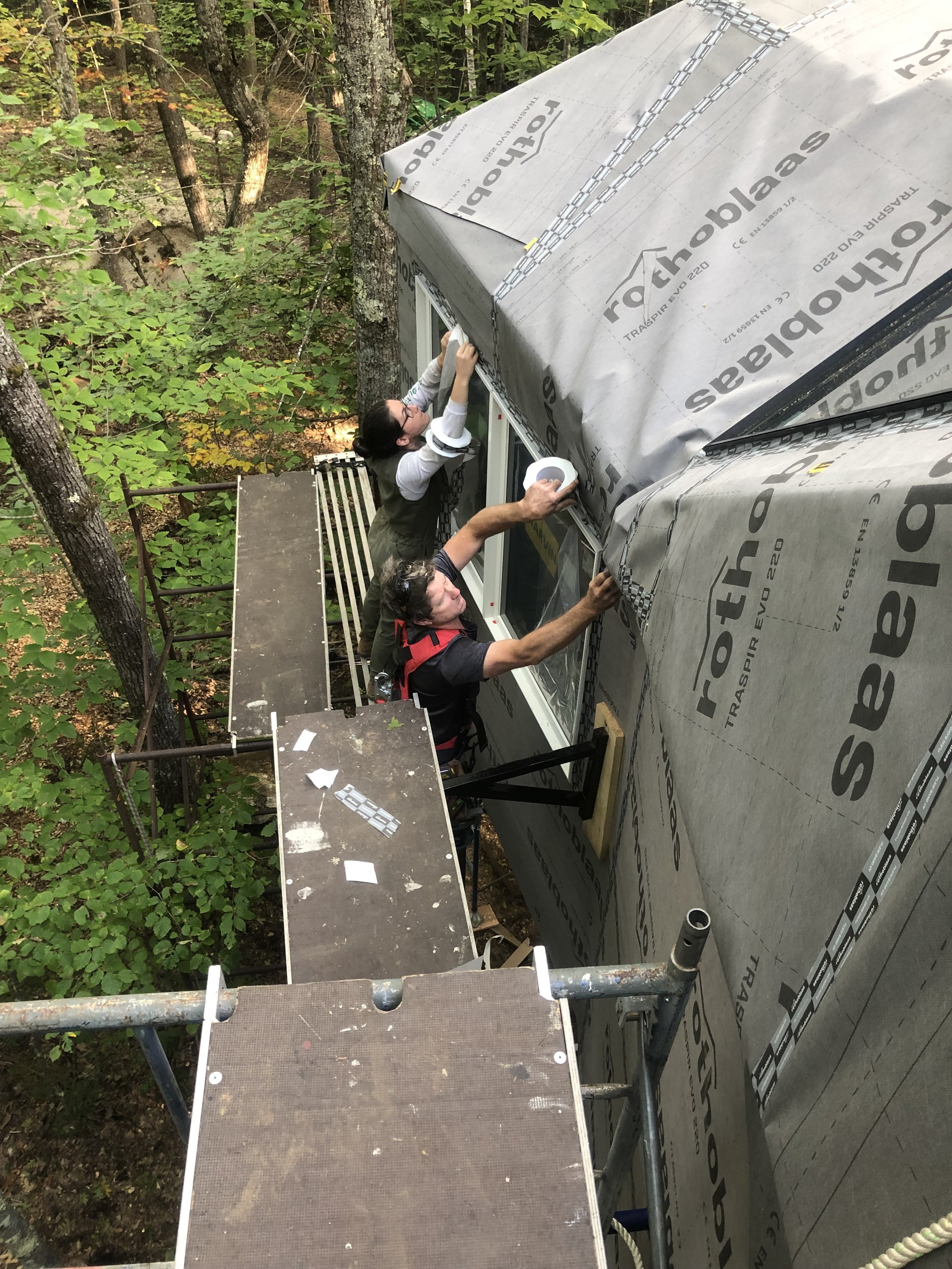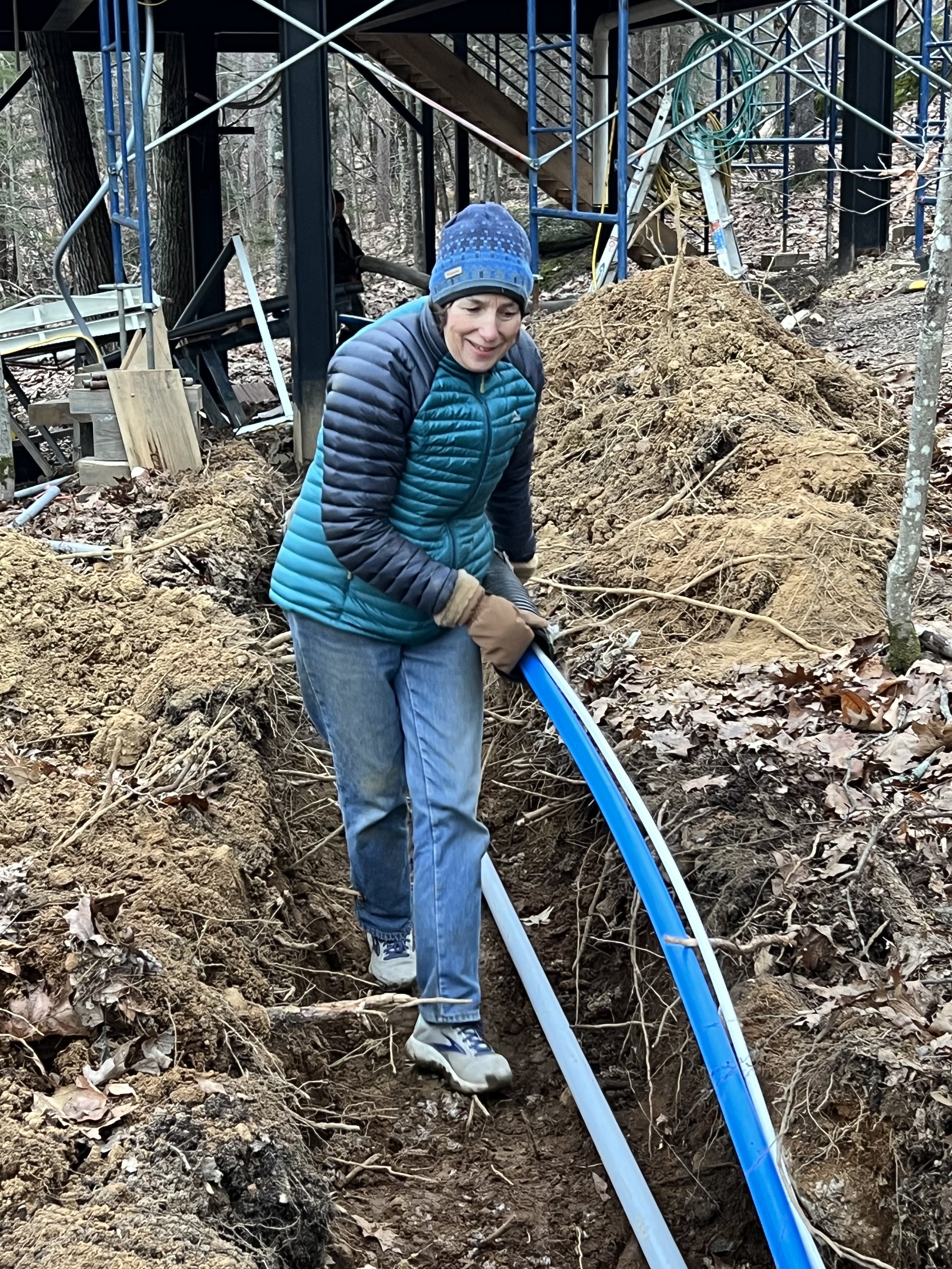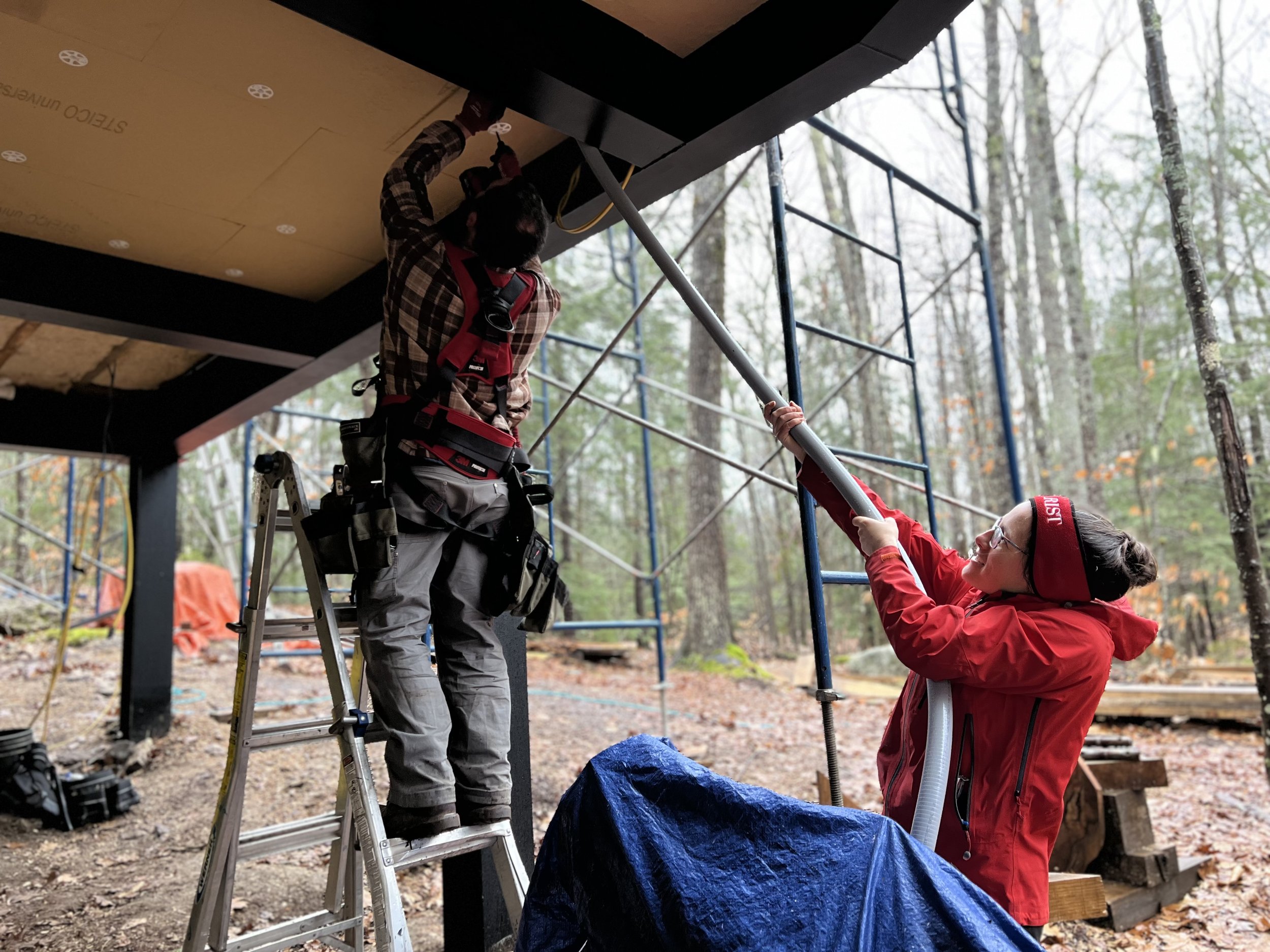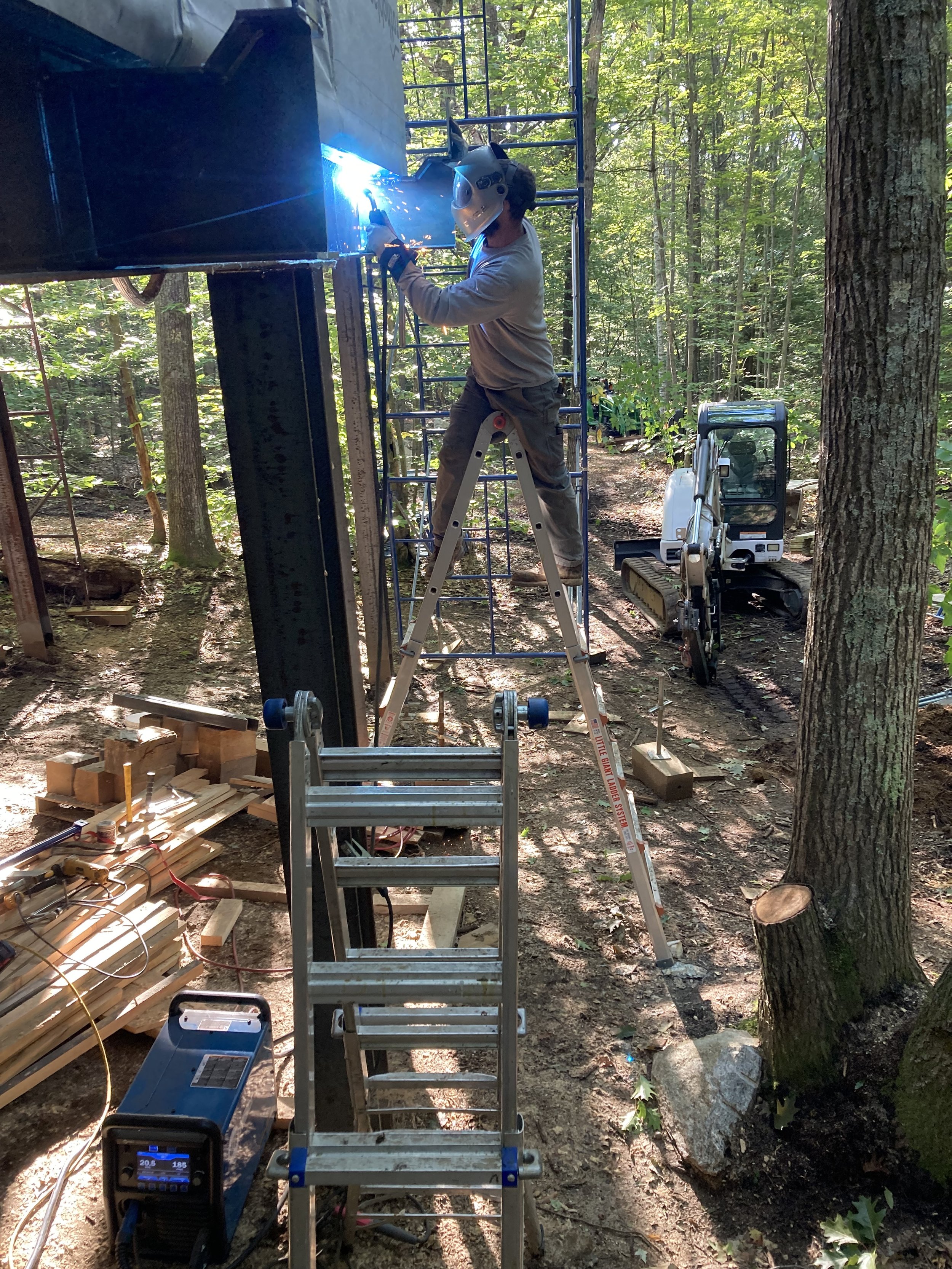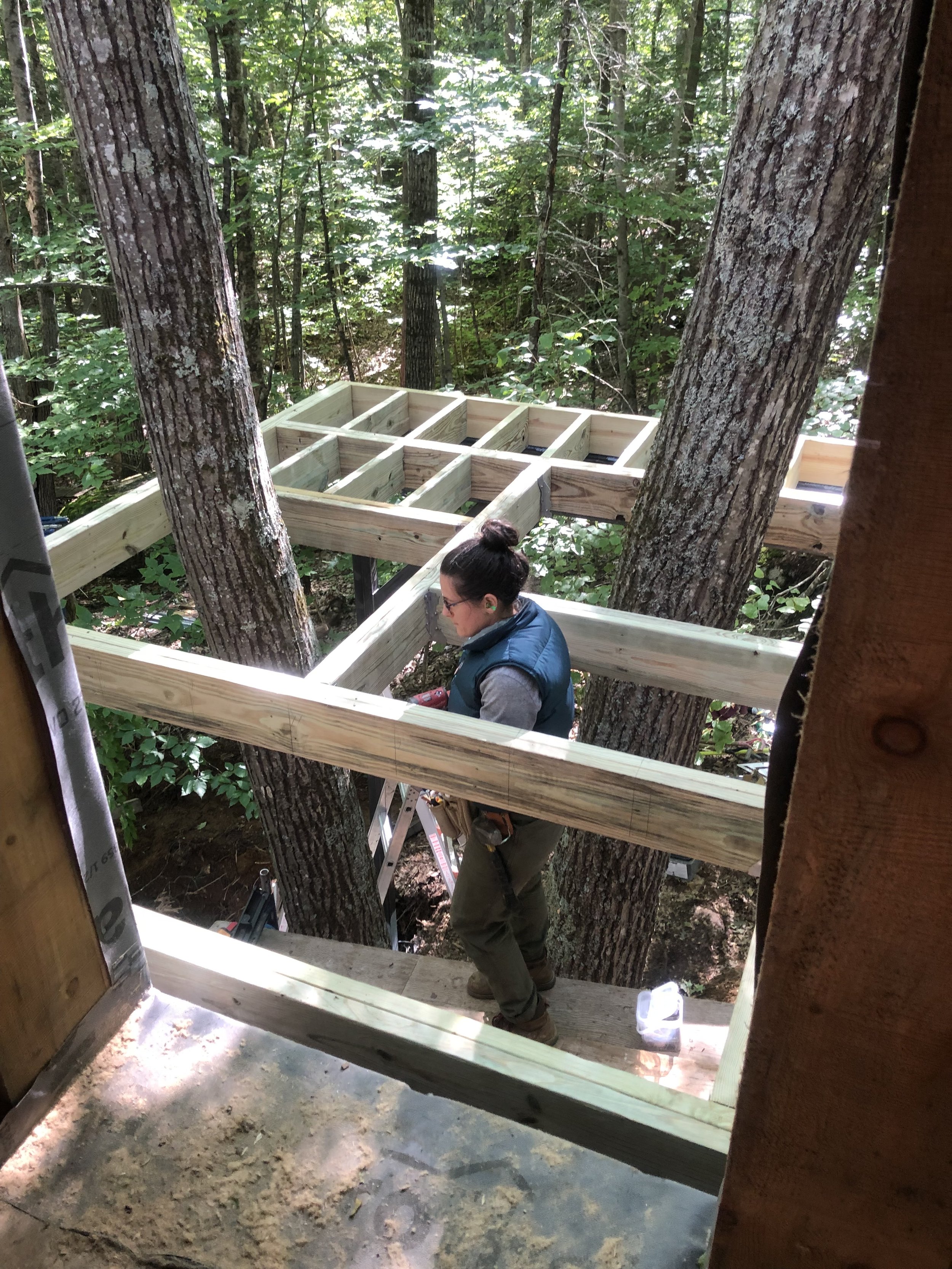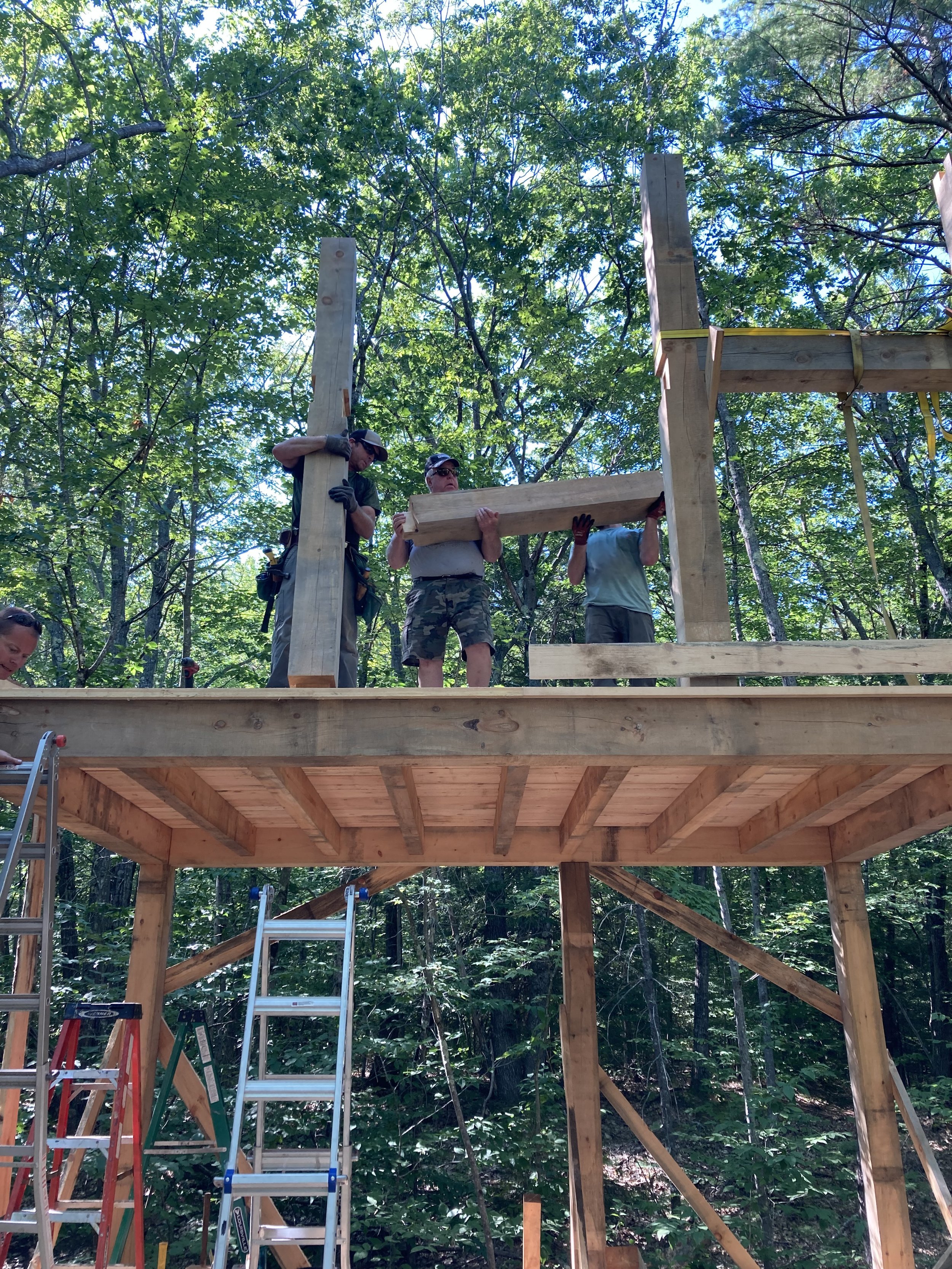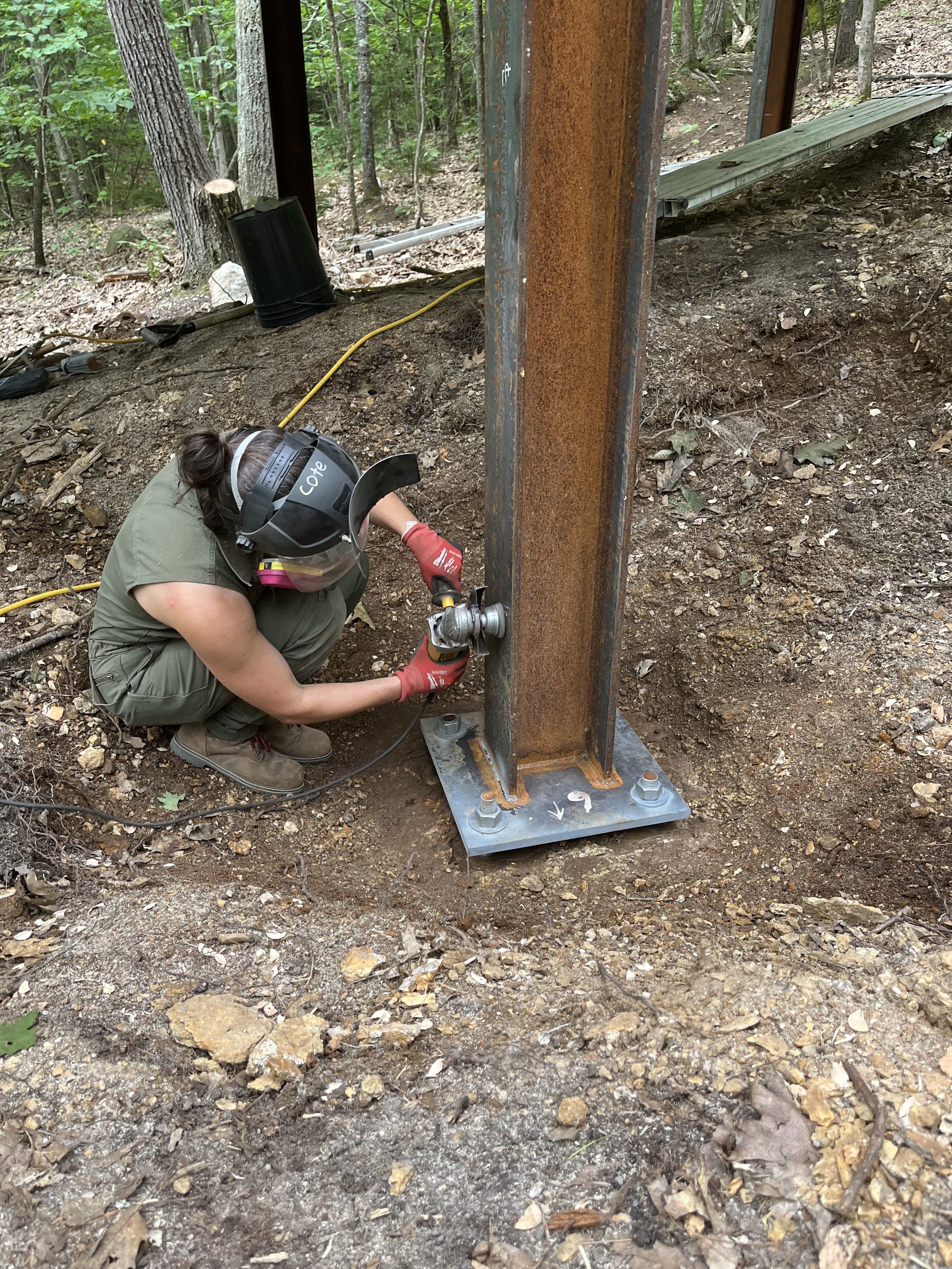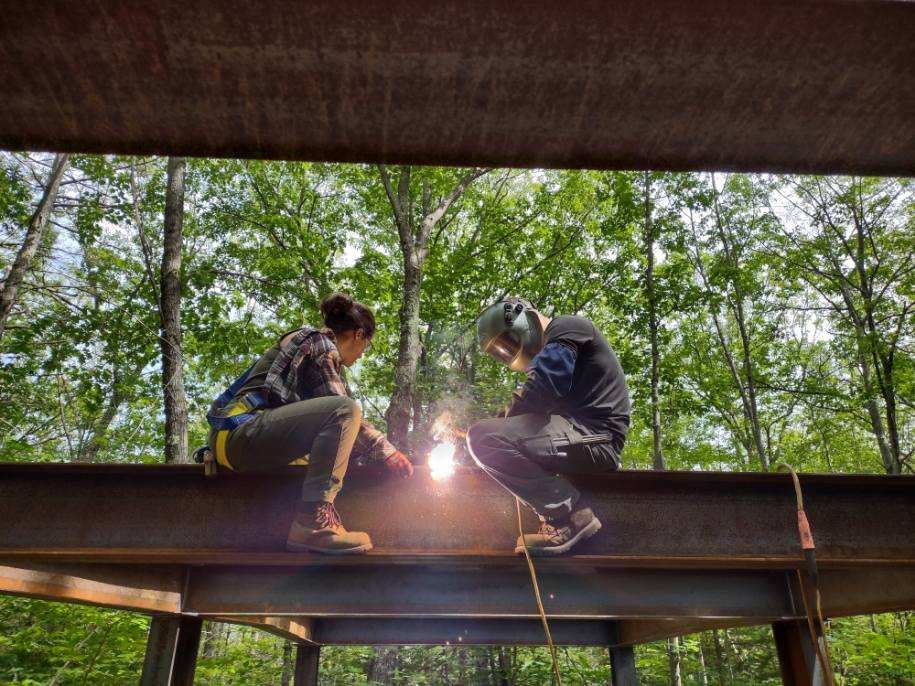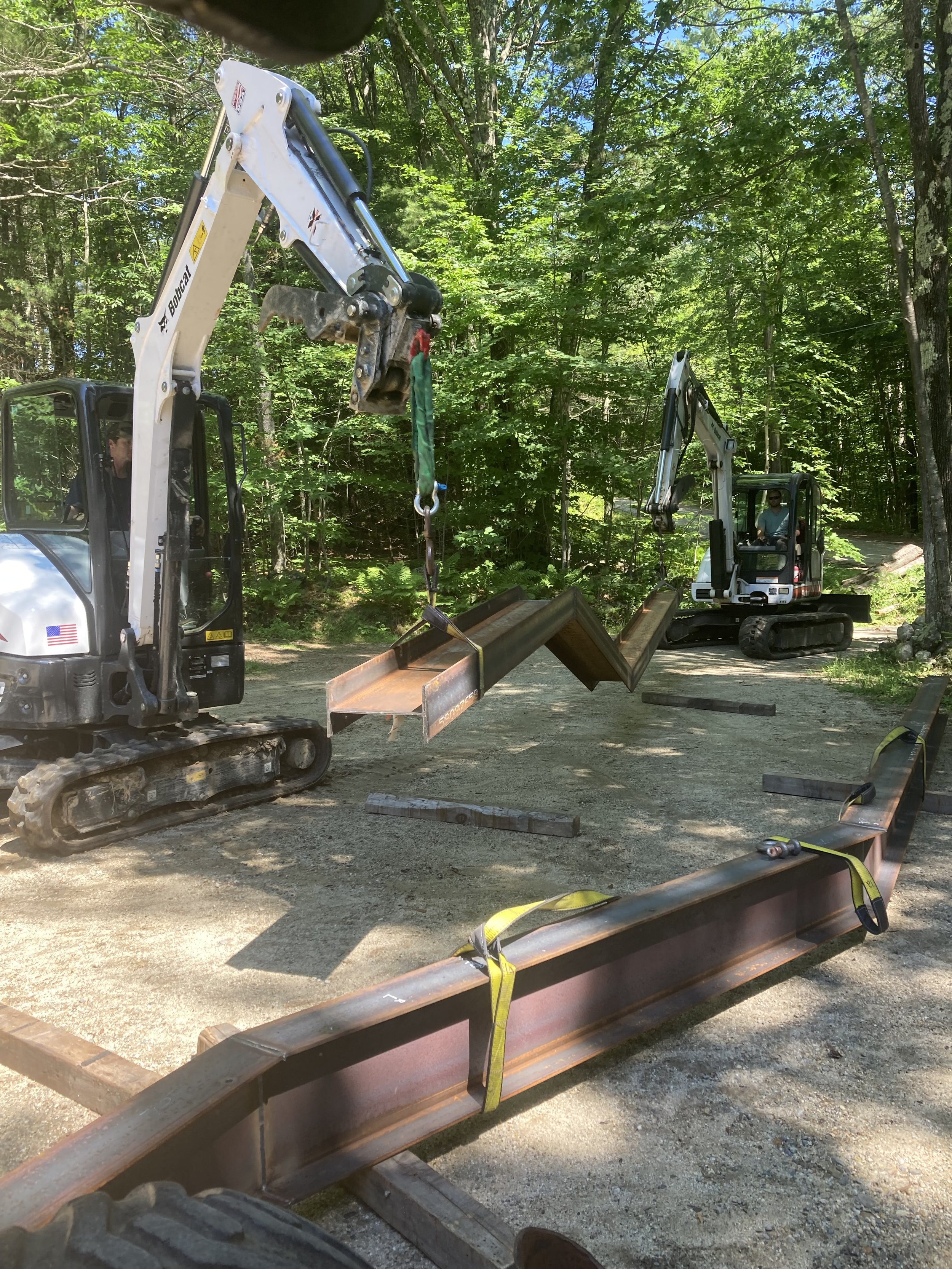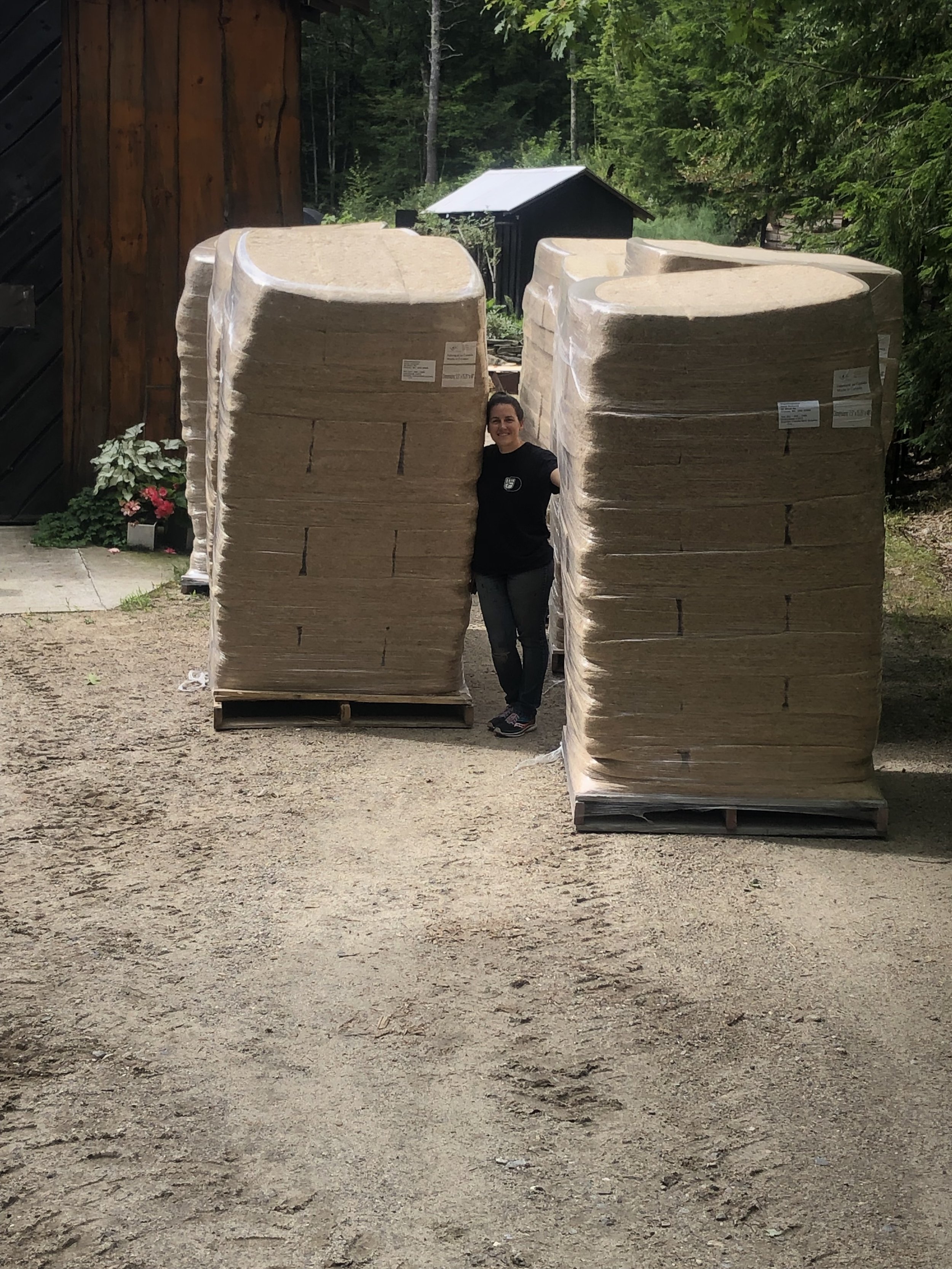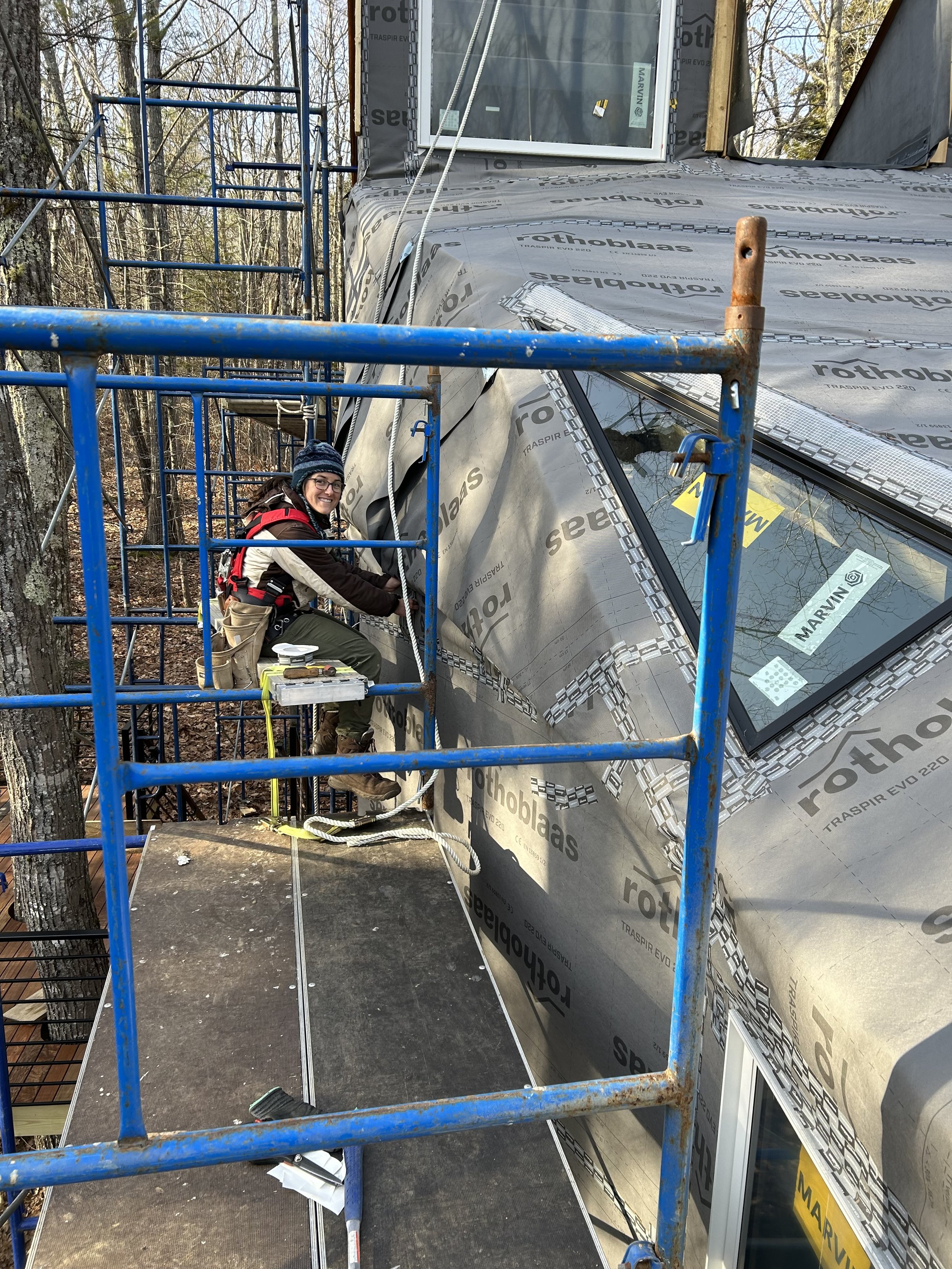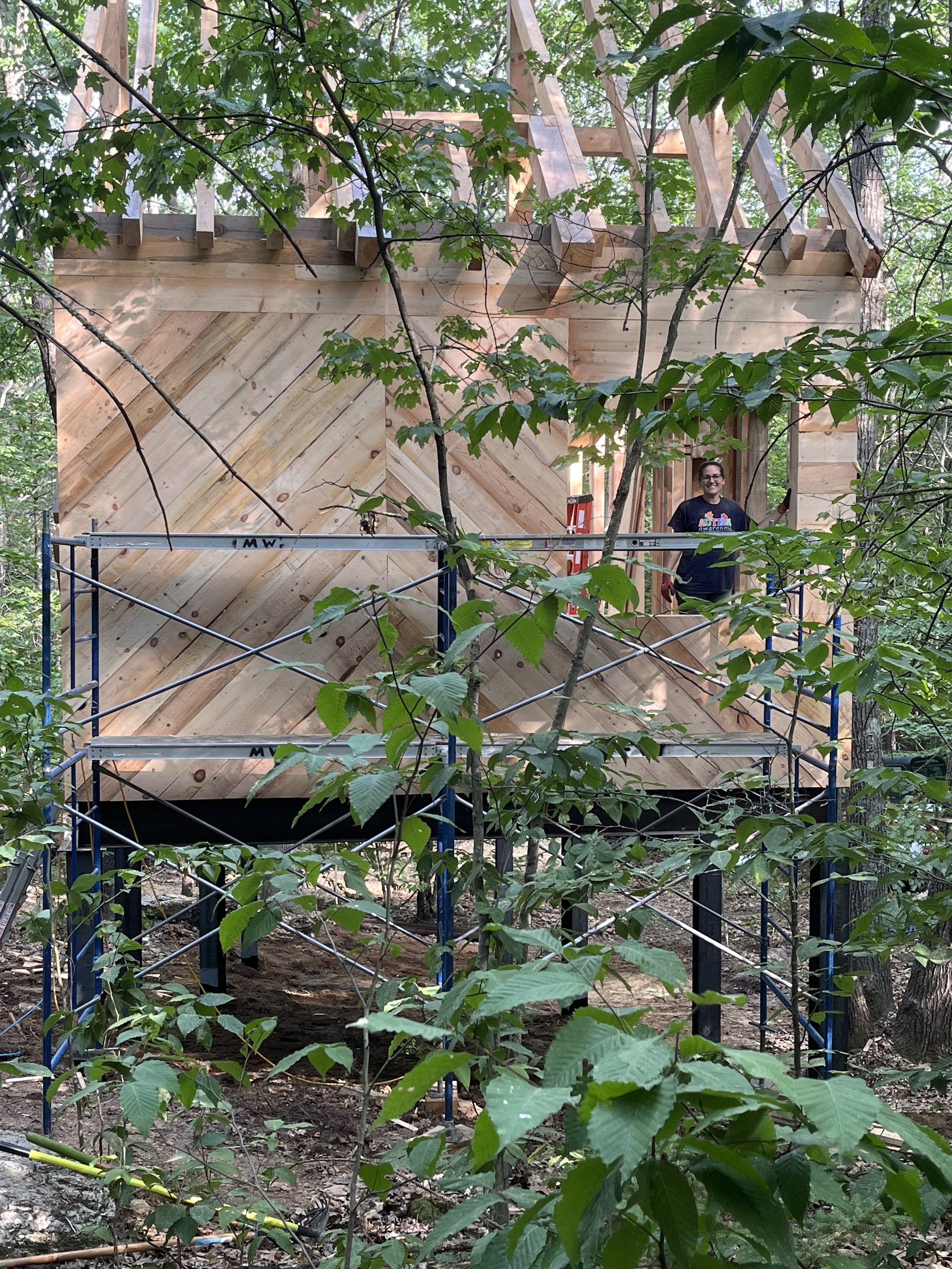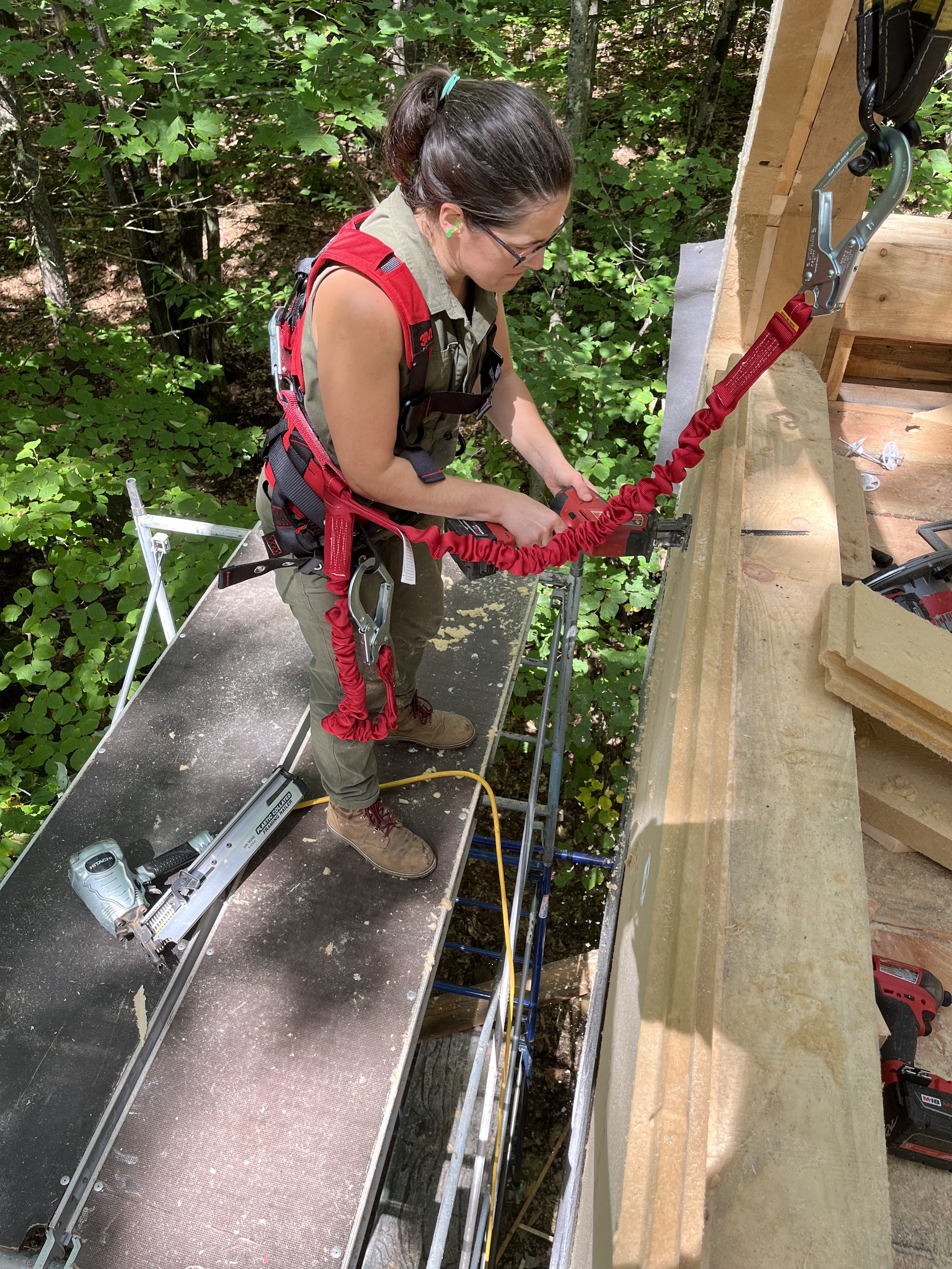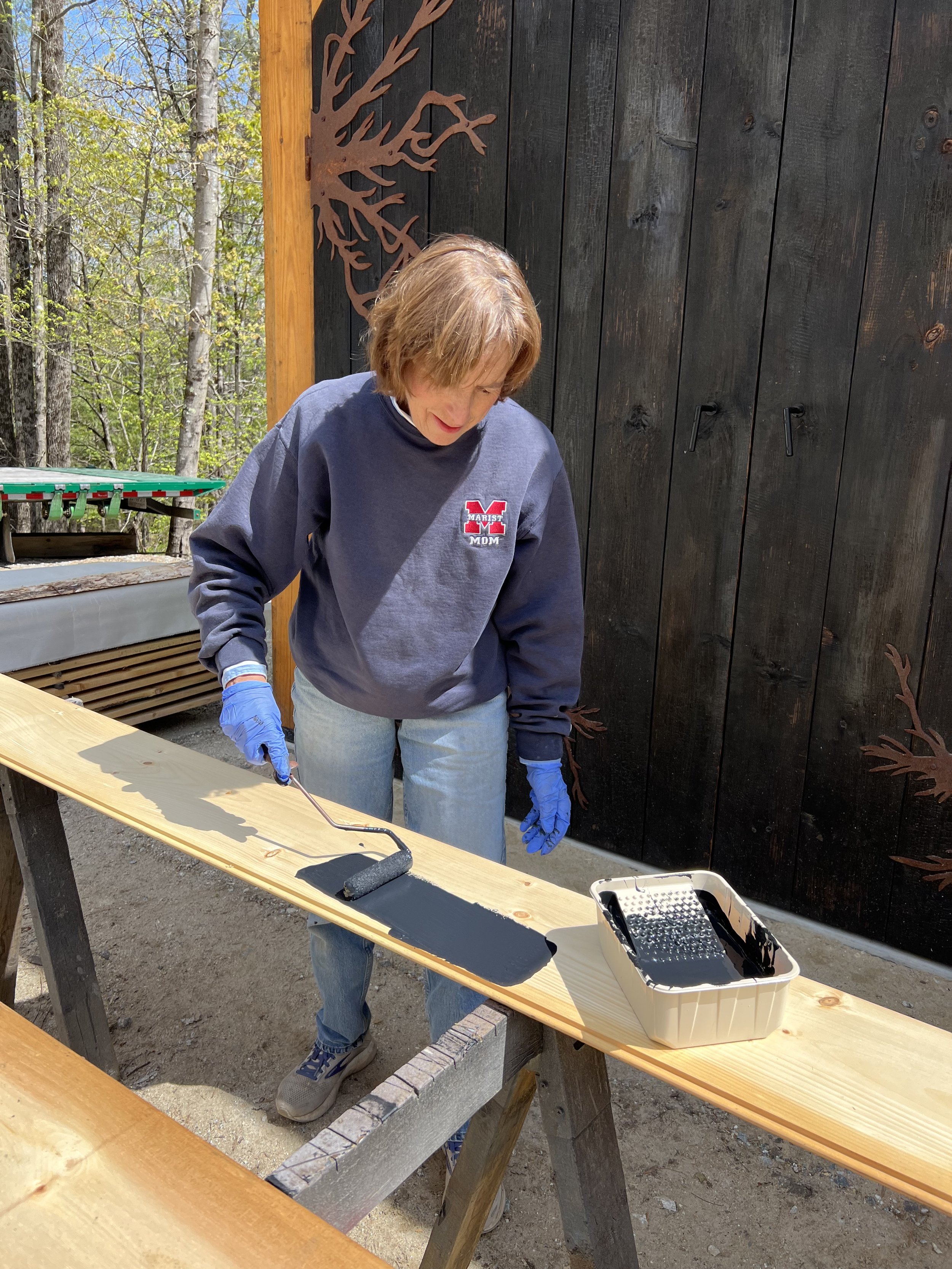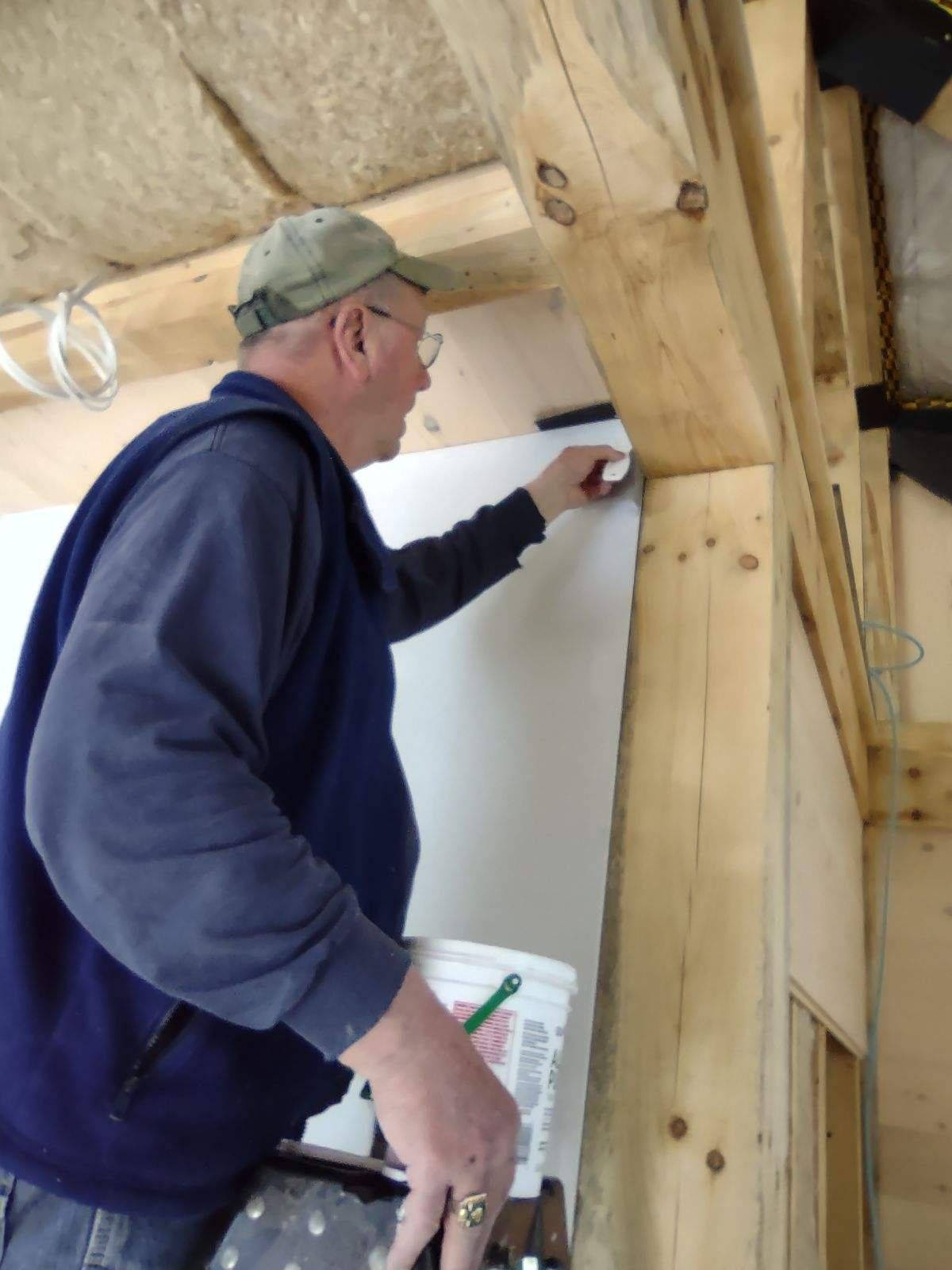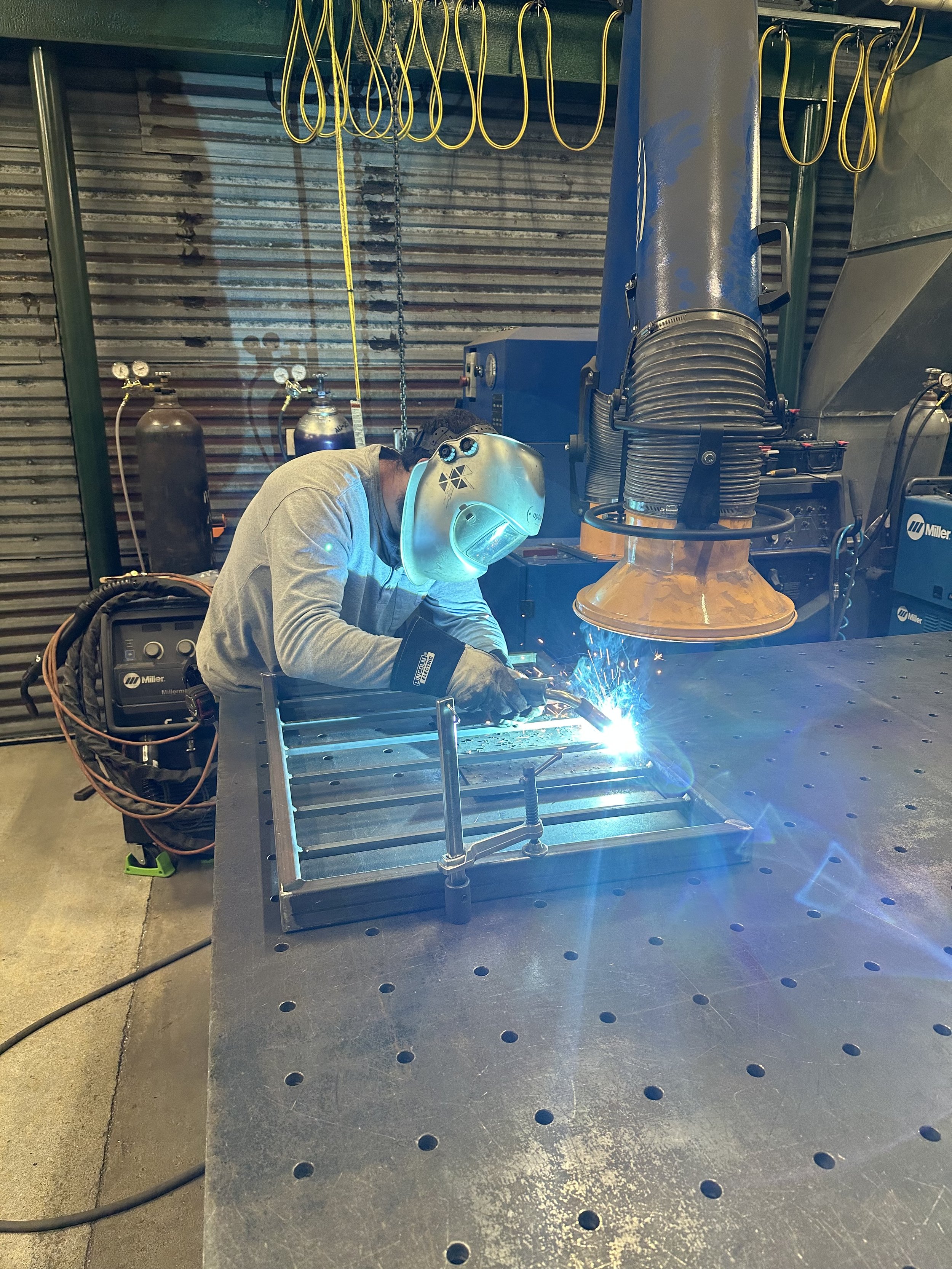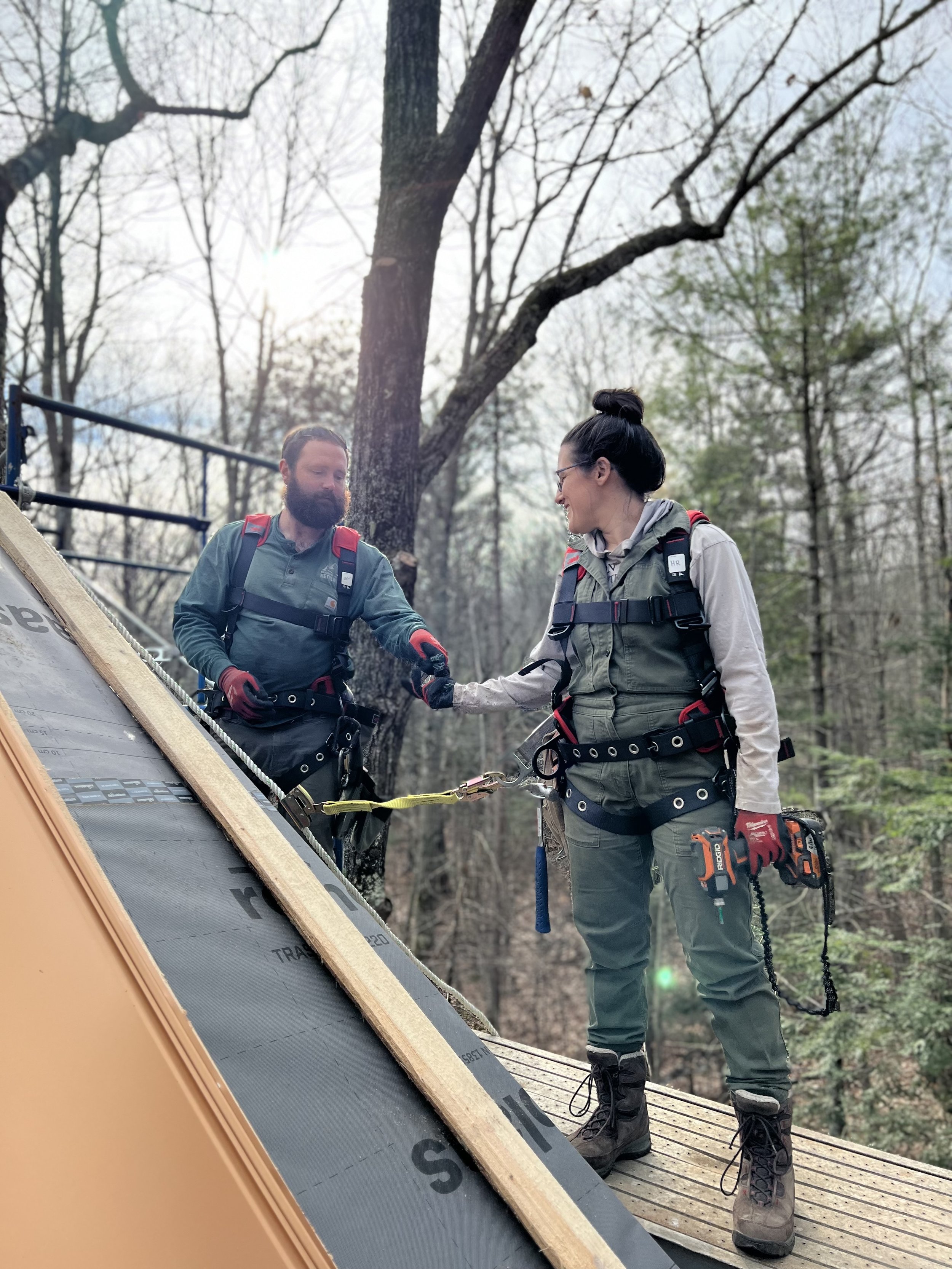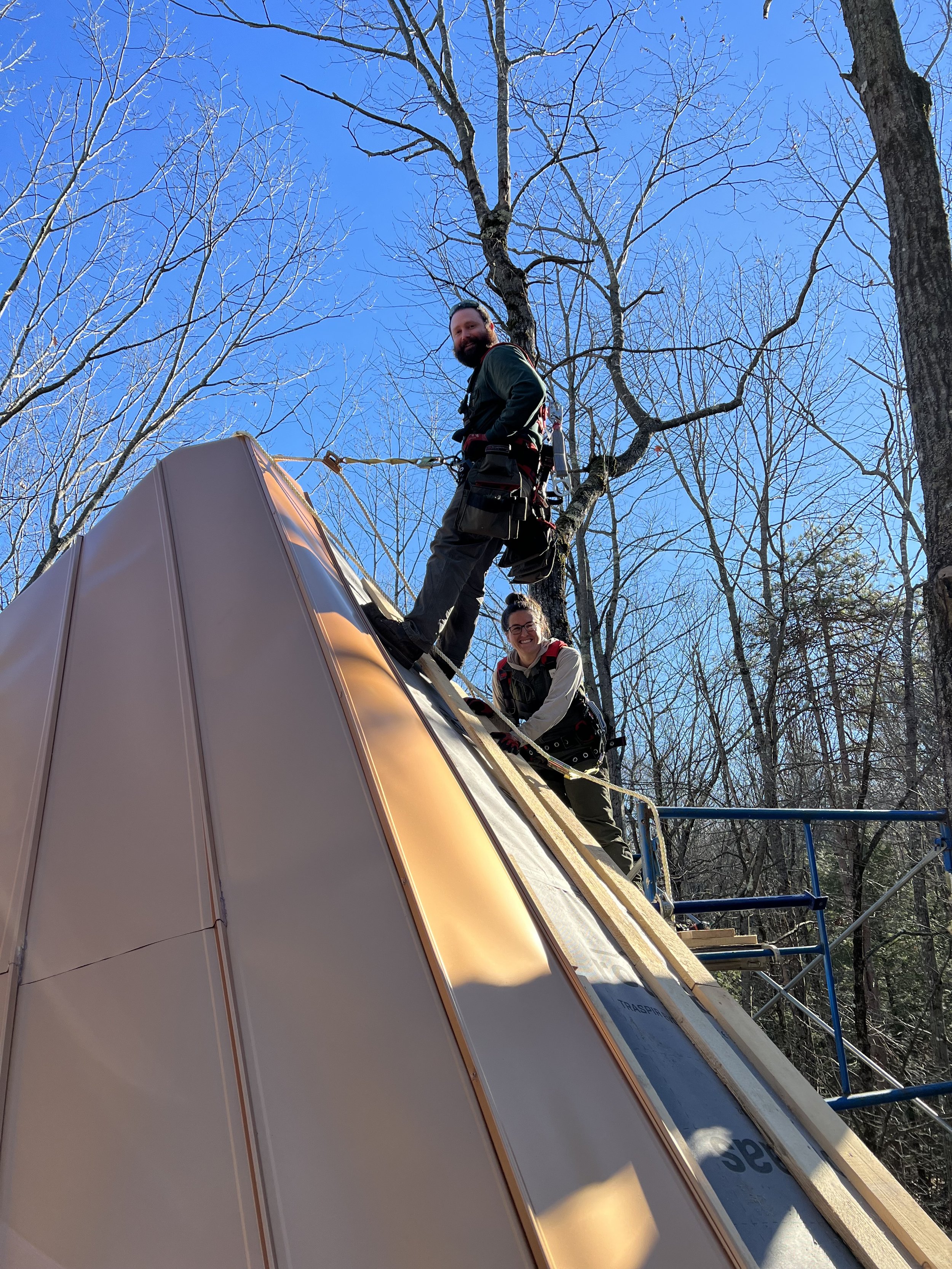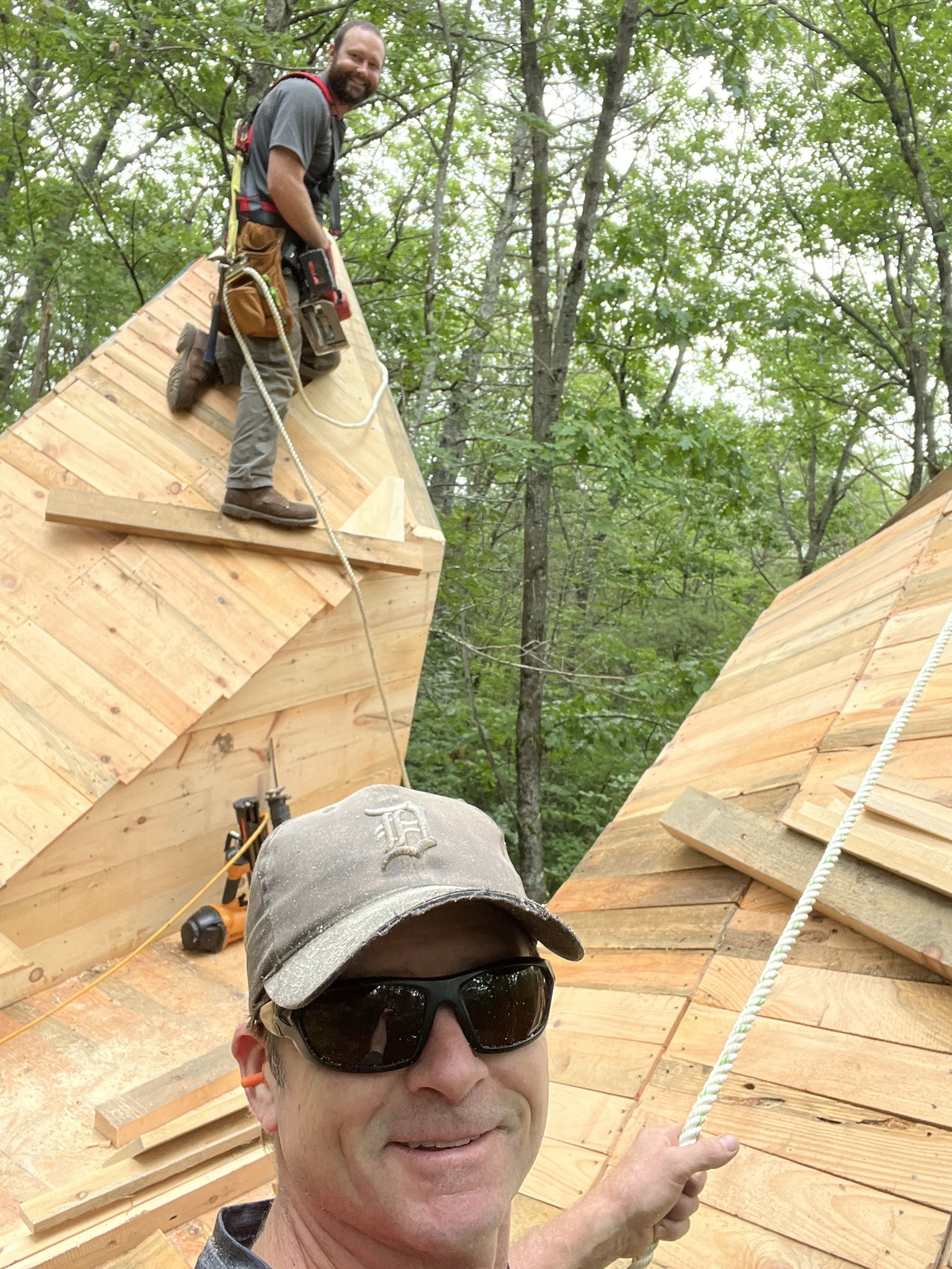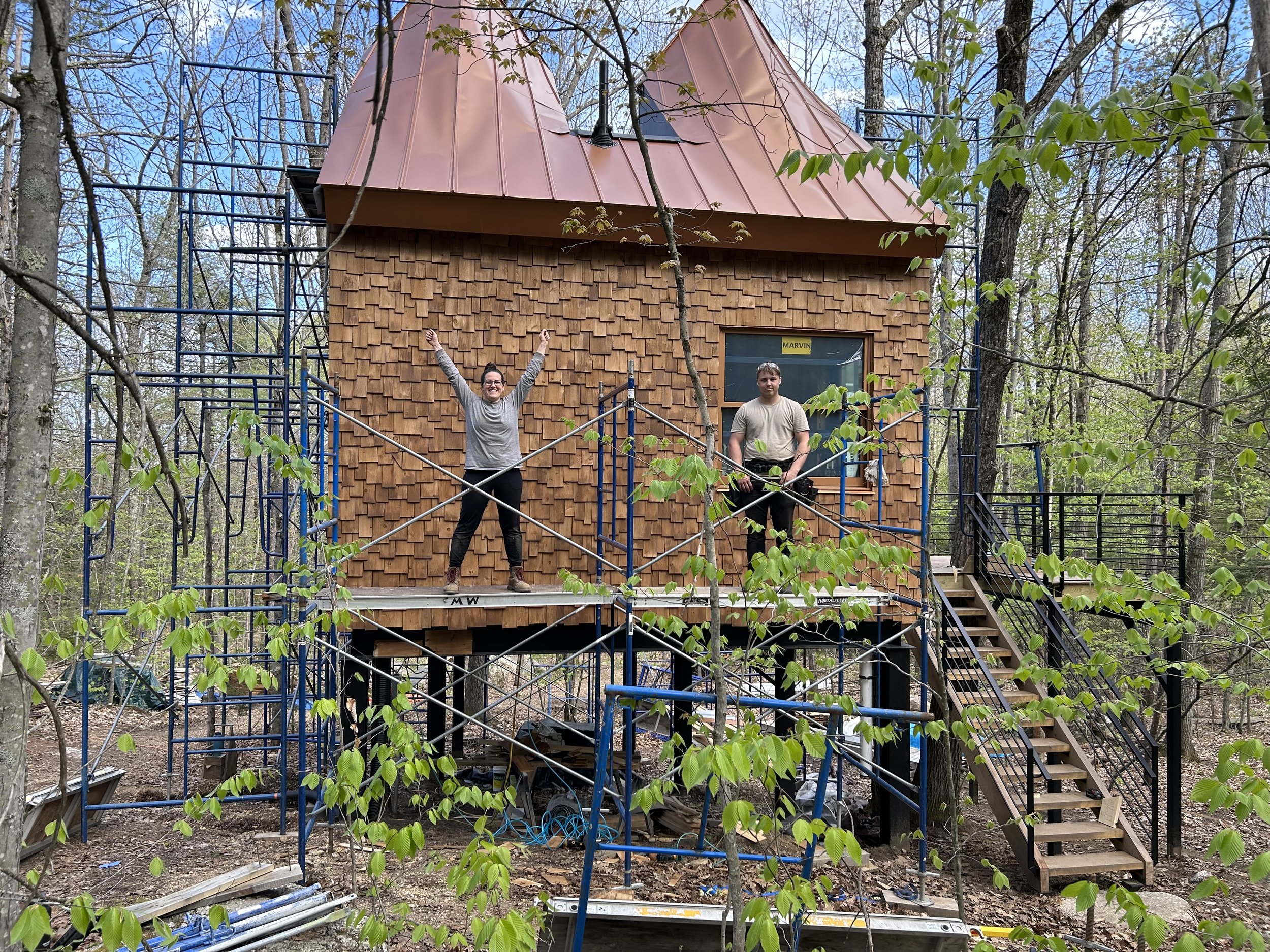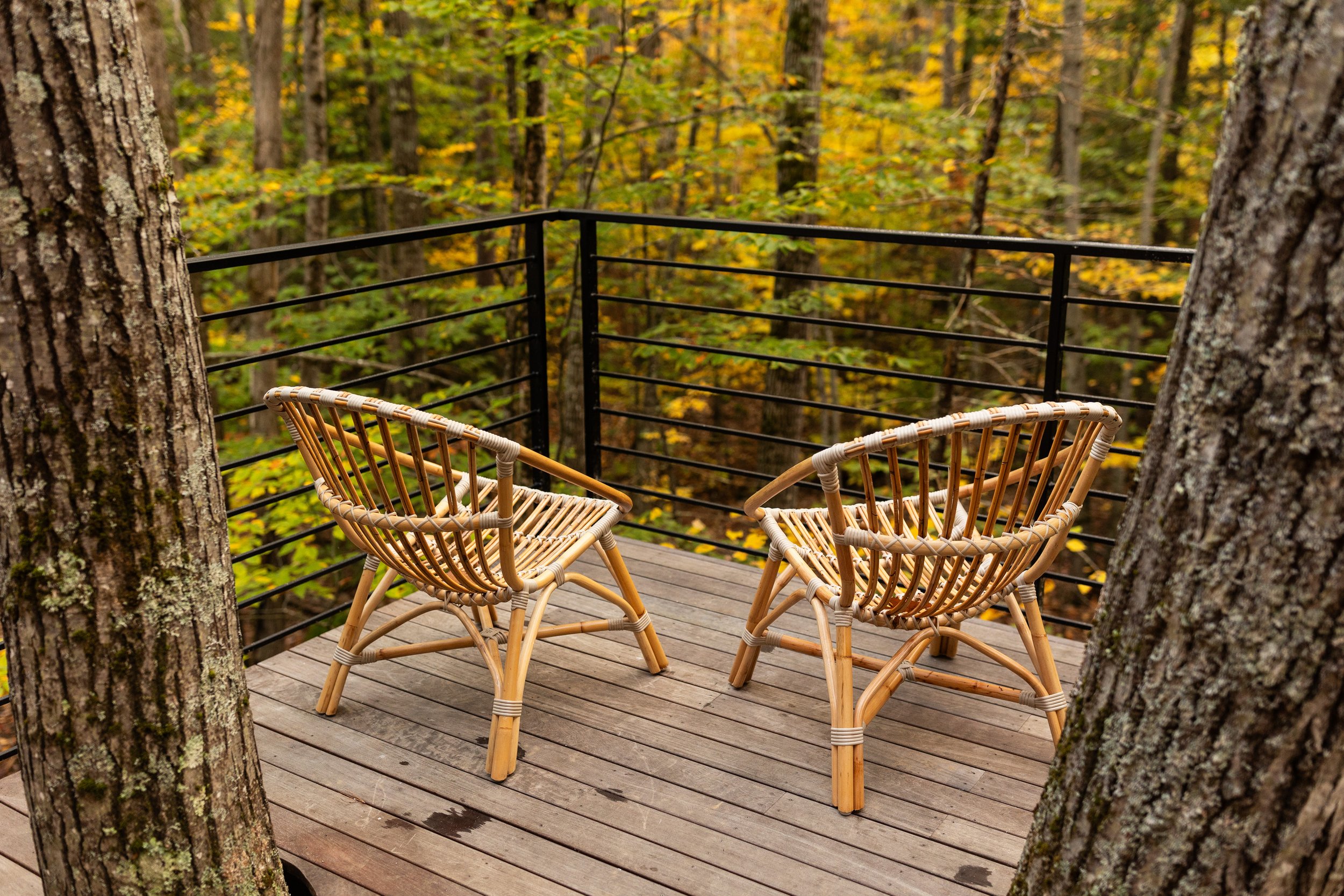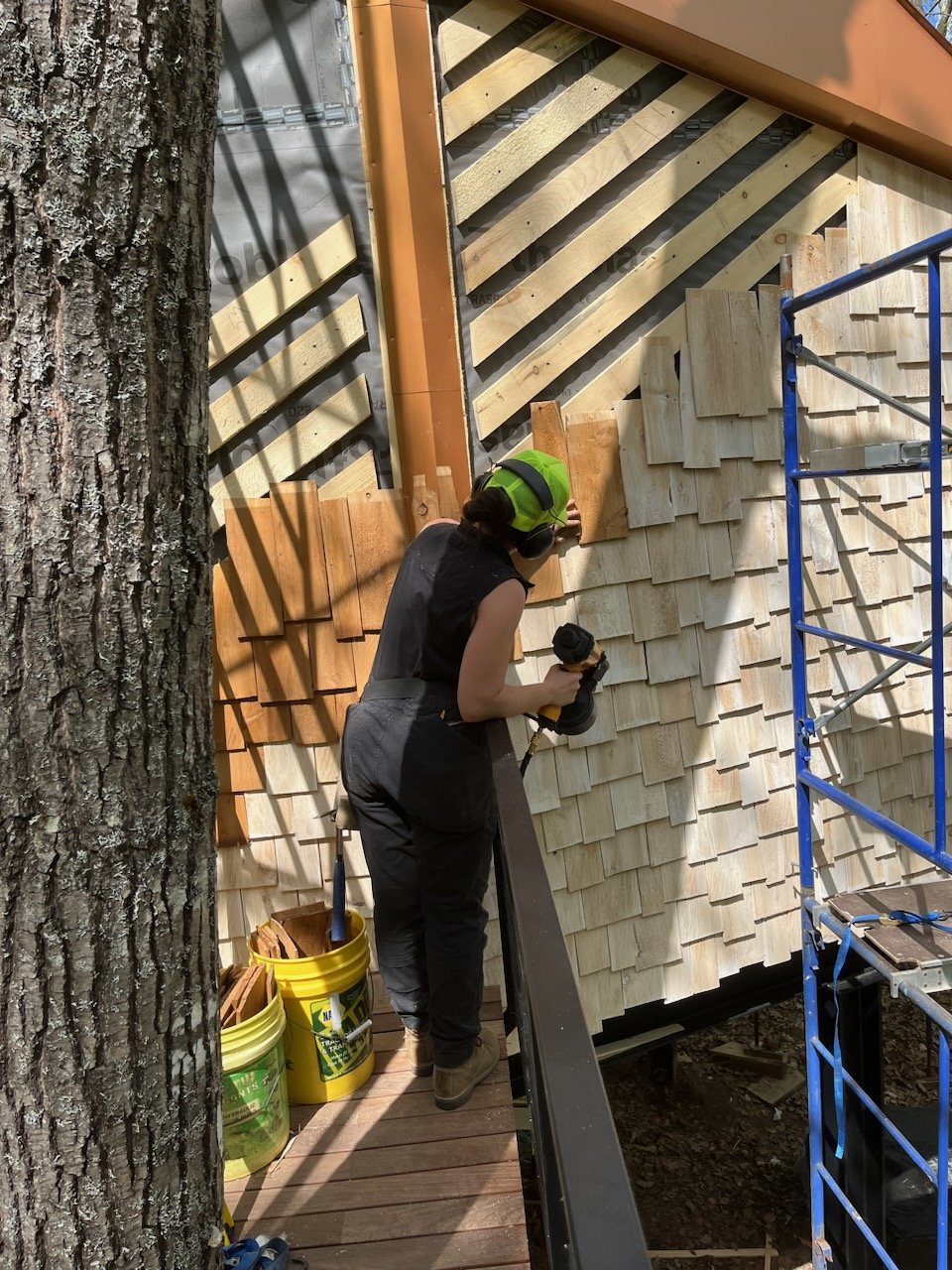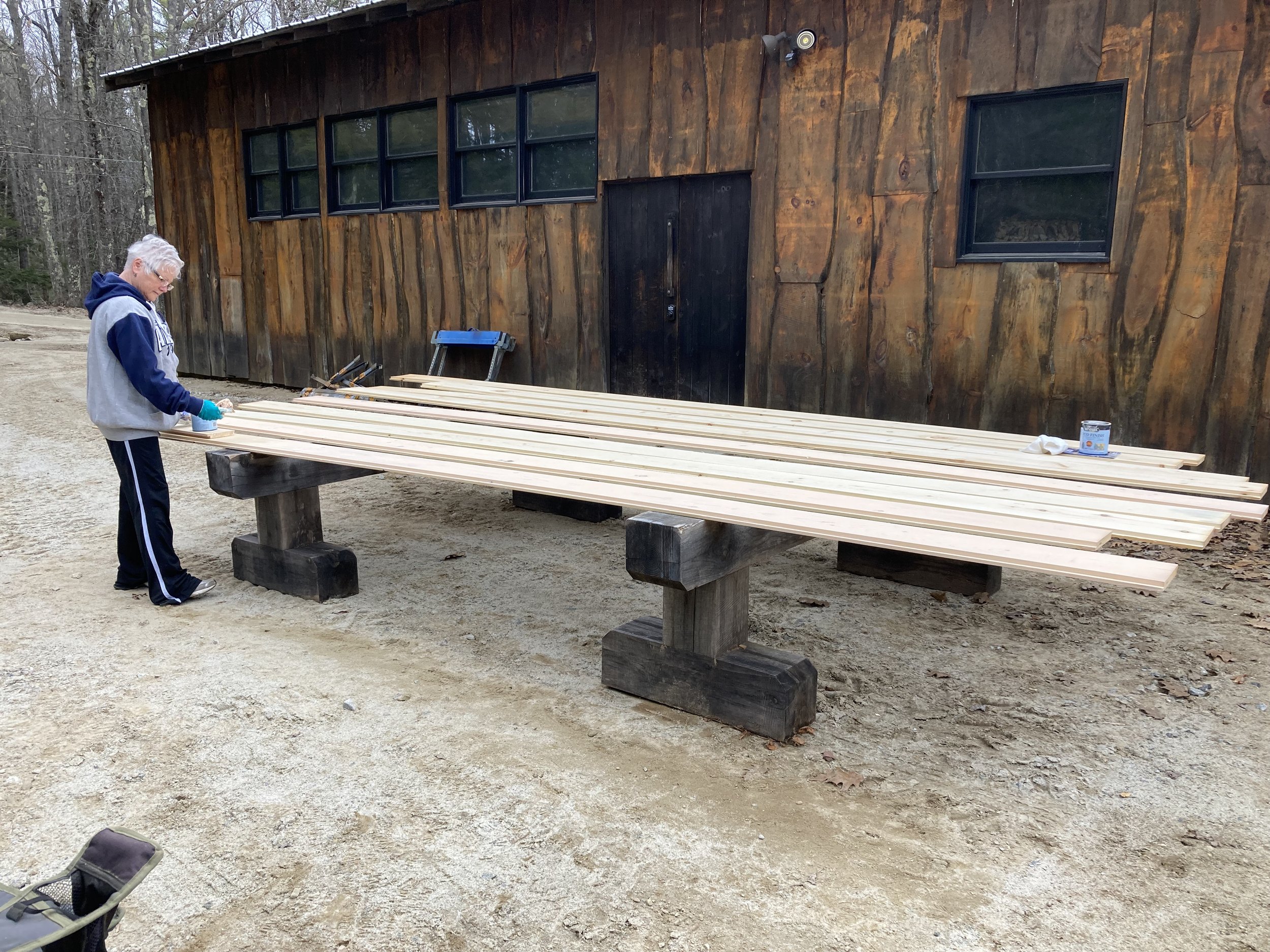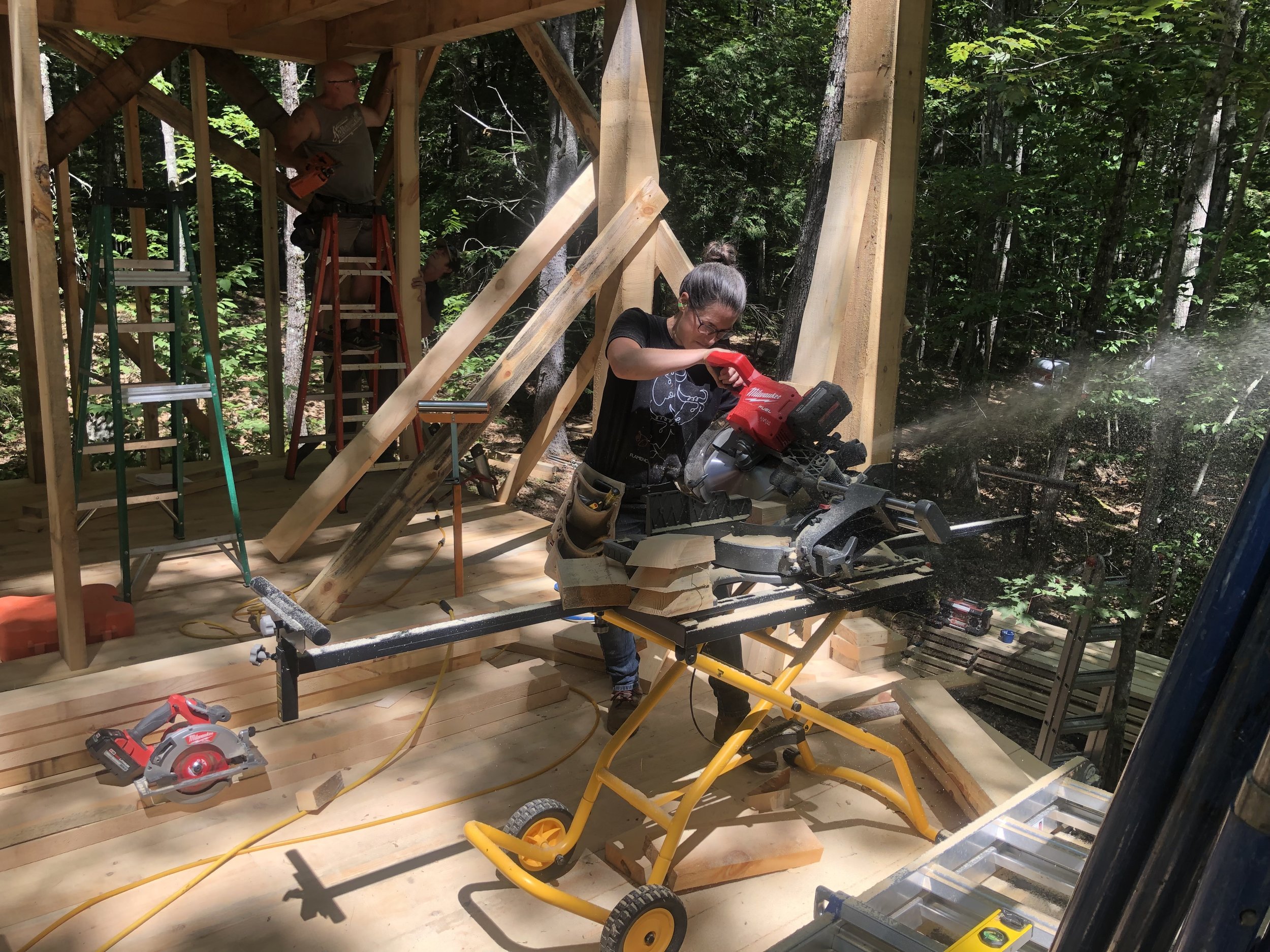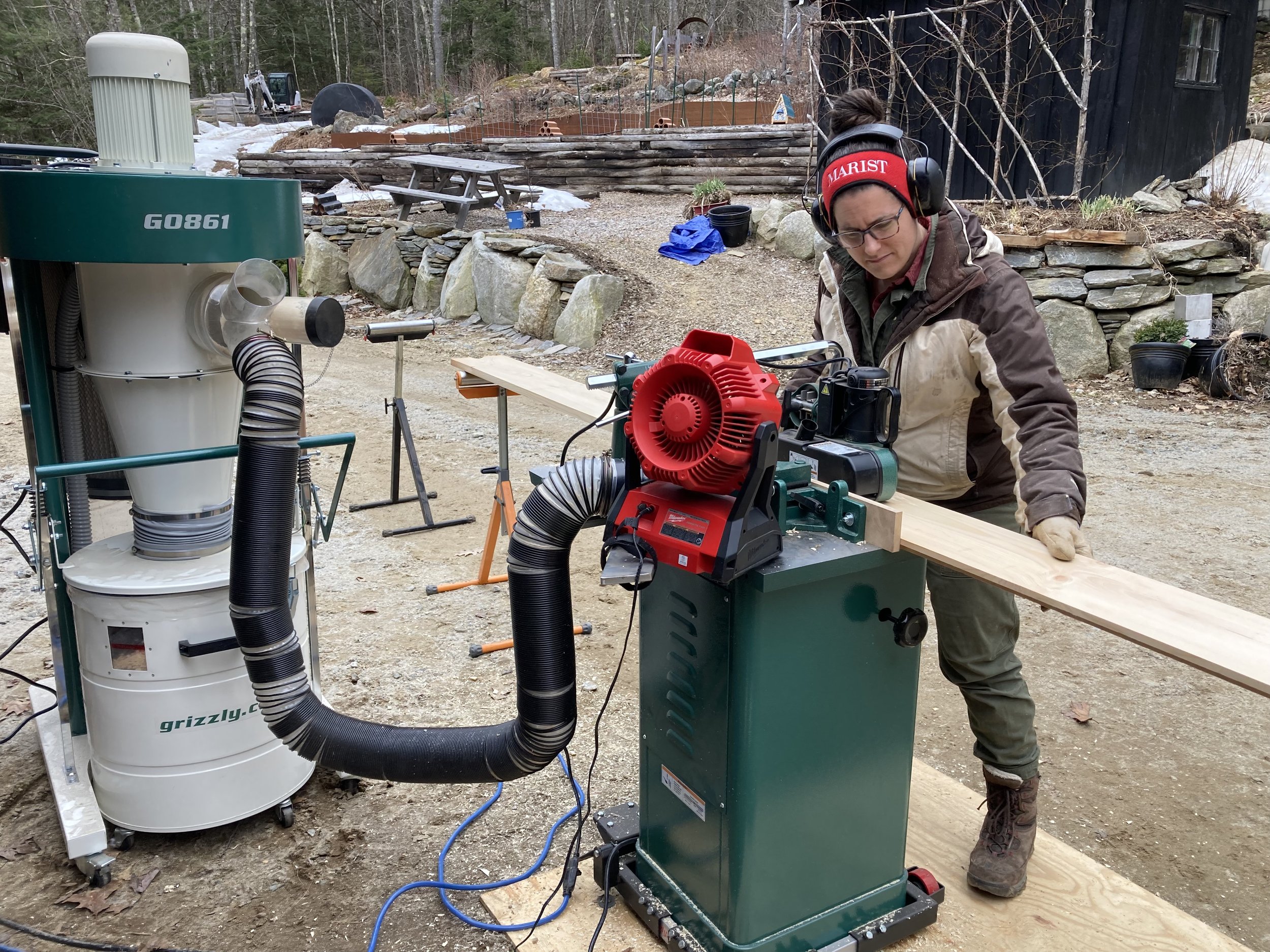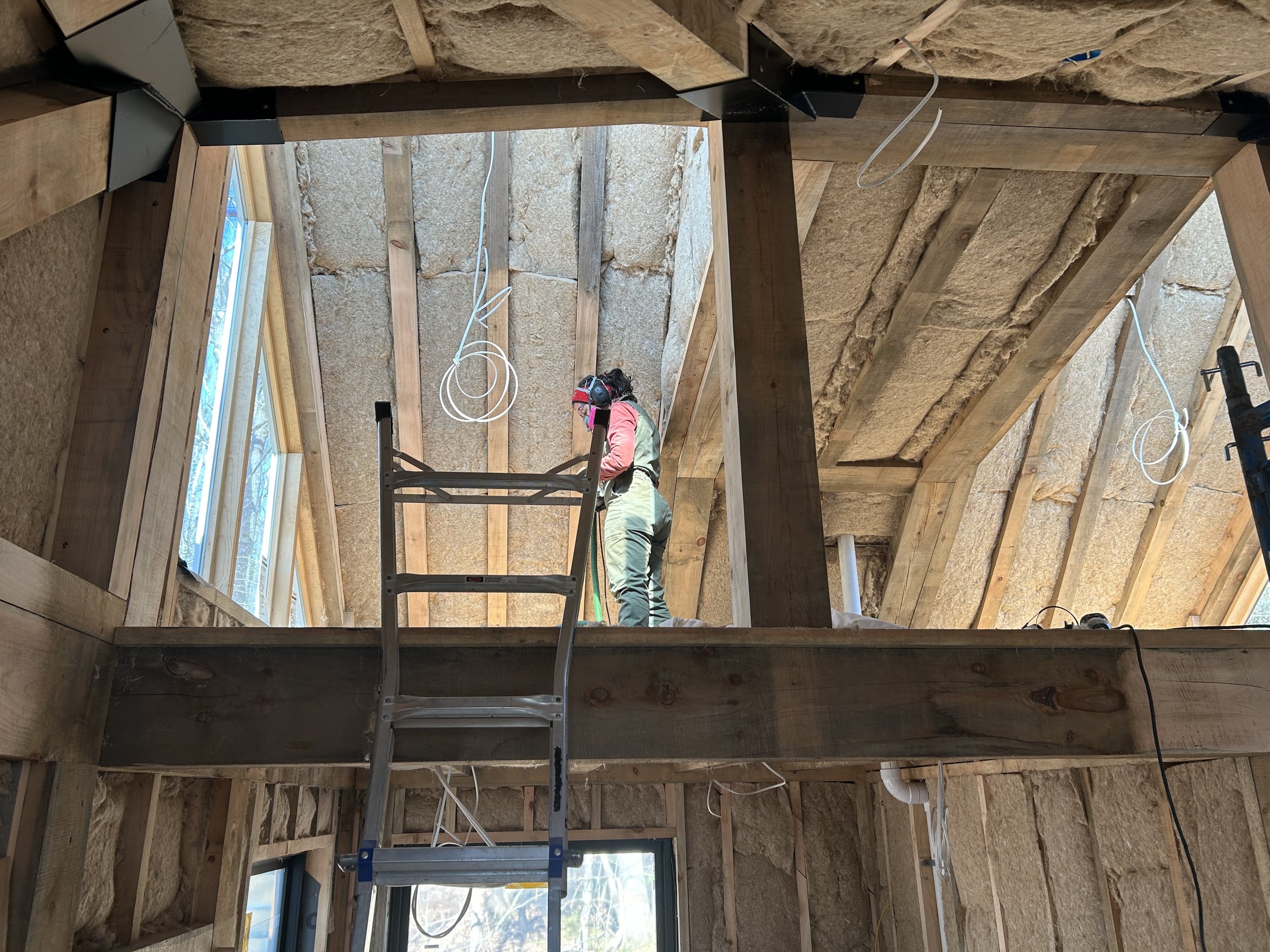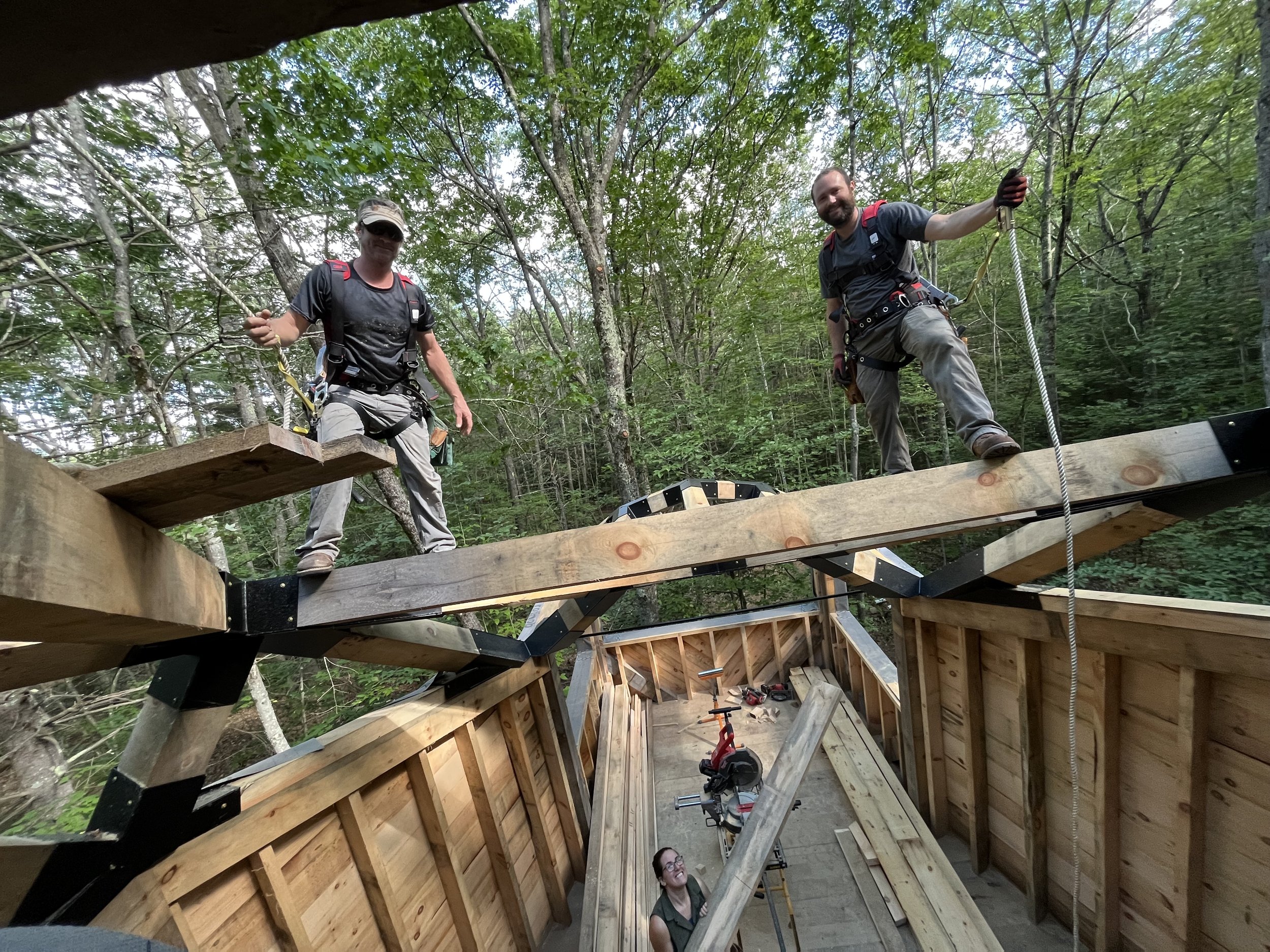THE
Build
It all started with a dream (literally).
Perched high in the woods, a fox-shaped tree house nestled among the oak and pine trees, its copper roof reflecting the morning sun. An amber glow illuminated what looked like the fox’s ears—windows of the bedroom loft inside.
When she awoke, Heidi immediately grabbed a pad and pencil to sketch out her vision.
“Can we build this?”
— she asked her partner Nicholas.
“I don’t see why not,”
— was the reply. And four years later, Heidi’s dream of an eco-friendly, sustainable and community-supported Copper Fox Tree House is now reality.
Heidi and husband Nicholas always had big imaginations and a “we can do it” attitude. But the Copper Fox Treehouse was not your average do-it-yourself project. This remarkable enterprise required perseverance, skill and a village of local friends and neighbors to help bring it to life.
Heidi and Nicholas wanted to create an enchanting cabin in the trees using local materials that fit perfectly in the landscape, left little waste behind in its construction and was powered by renewable energy. They used the latest building science to build an efficient, tight but breathable home to ensure the fox would use as little energy possible to heat and cool.
They planned, designed and built almost all of the structure themselves. They spent three years collecting trees from local properties and milling 85% percent of the lumber, even the cedar shingles that cover the fox. Their mission was to emphasize fine craftsmanship, sustainable building science and to minimize any impact on the land.
When construction finally began, they assembled a motivated team of neighbors, friends and family to help give birth to the Copper Fox Treehouse.
Some details:
Local Wood
The lumber came from within 30 miles of the Copper Fox and the millwork was done at the sawmill they own on their property. Nothing was wasted. The bark and offcuts were chipped for lighted pathways leading to the treehouse.
Sustainable
The electricity to power the fox is produced from solar panels on the property. The kitchen appliances, electrical wire, tiles and many of the fixtures were left over materials purchased from other building sites to keep them out of landfills.
Low Impact
Minimizing waste was important since traditional building methods can produce a great deal of waste. The couple recycled all the cardboard, metal offcuts and paint cans. Waste from the entire project fit into less than one roll of garbage bags. There was very little impact to the earth around the building. The trees and moss were kept intact and minimally impacted.
Locally Sourced
The Fox was decorated with local handmade items and artwork. The cushions and pillows were made by Nicholas’ mother. The fox head keystone above the bathroom door was carved by one neighbor and hand-embroidered artwork on the wall was crafted by another. Coat racks, tea towels, mugs and framed art were all created by local Maine artists.
Energy Efficient
Heidi and Nicholas employed the best green building practices to create an efficient space that provides healthy air quality inside the fox.
The walls of the treehouse are one-foot thick and insulated with hemp wool from Hempitecture, a leading provider of green building materials. Hemp wool has a negative carbon footprint which stores more carbon dioxide than is produced when the product is manufactured. The material is non-toxic, mold-resistant, non-irritating, healthy and resistant to pests. The exterior insulation is a wood fiberboard insulation called Steico. It protects against cold, heat, noise, and moisture. It’s also permeable and helps make living spaces healthy. In addition, this special fiber board provides double climate protection by storing and reducing CO2 emissions by conserving heating energy.
The windows are all high efficiency Marvin windows. The Fox is heated and cooled by a Samsung heat pump and a Jotul gas stove. The appliances are all energy efficient.

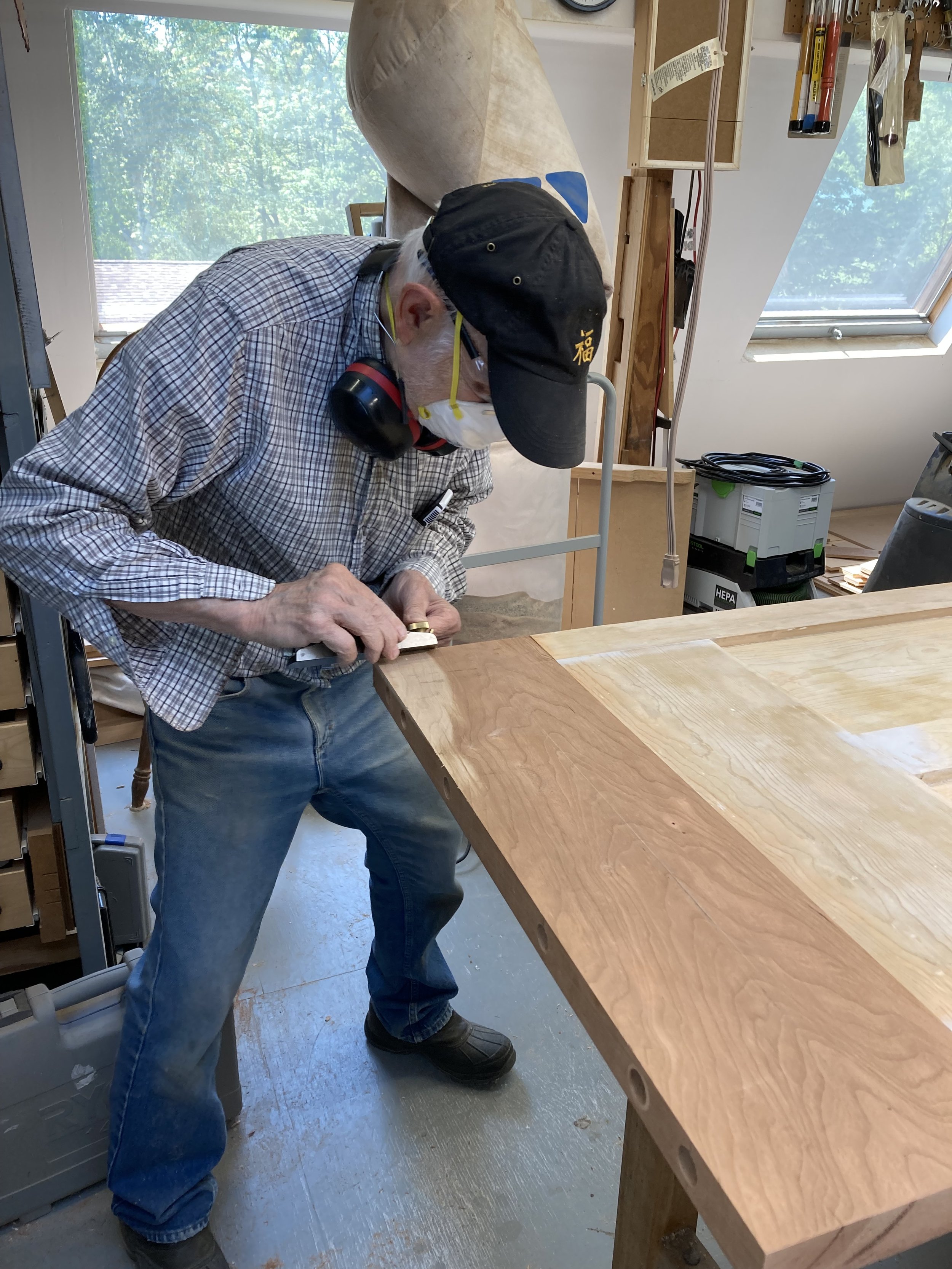
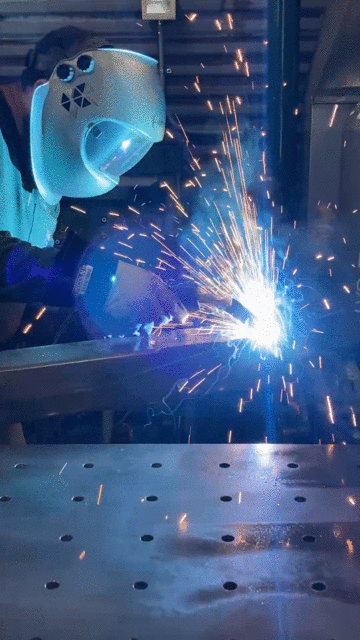
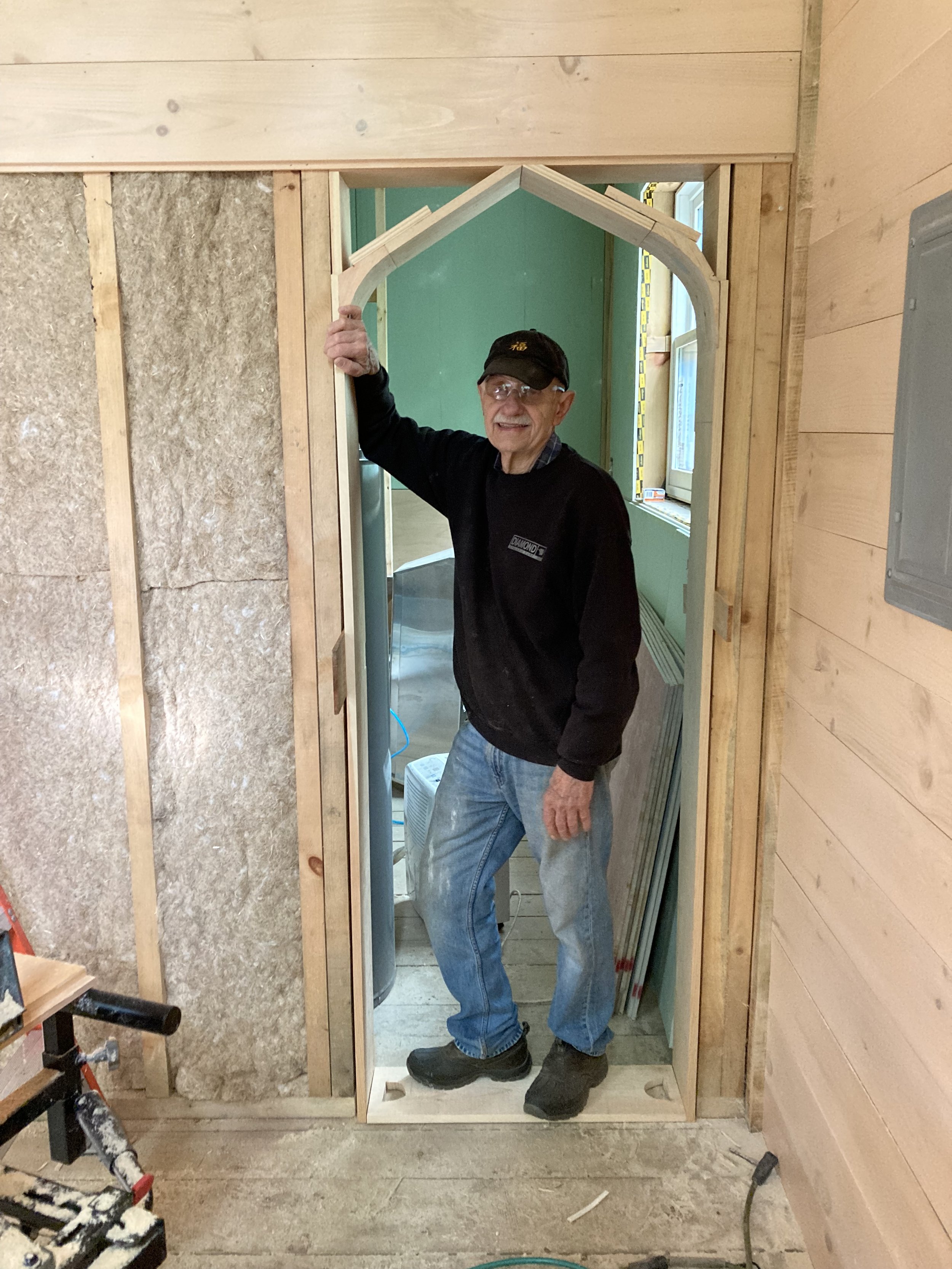
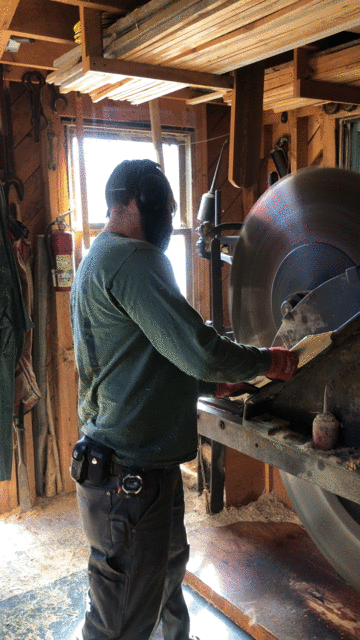
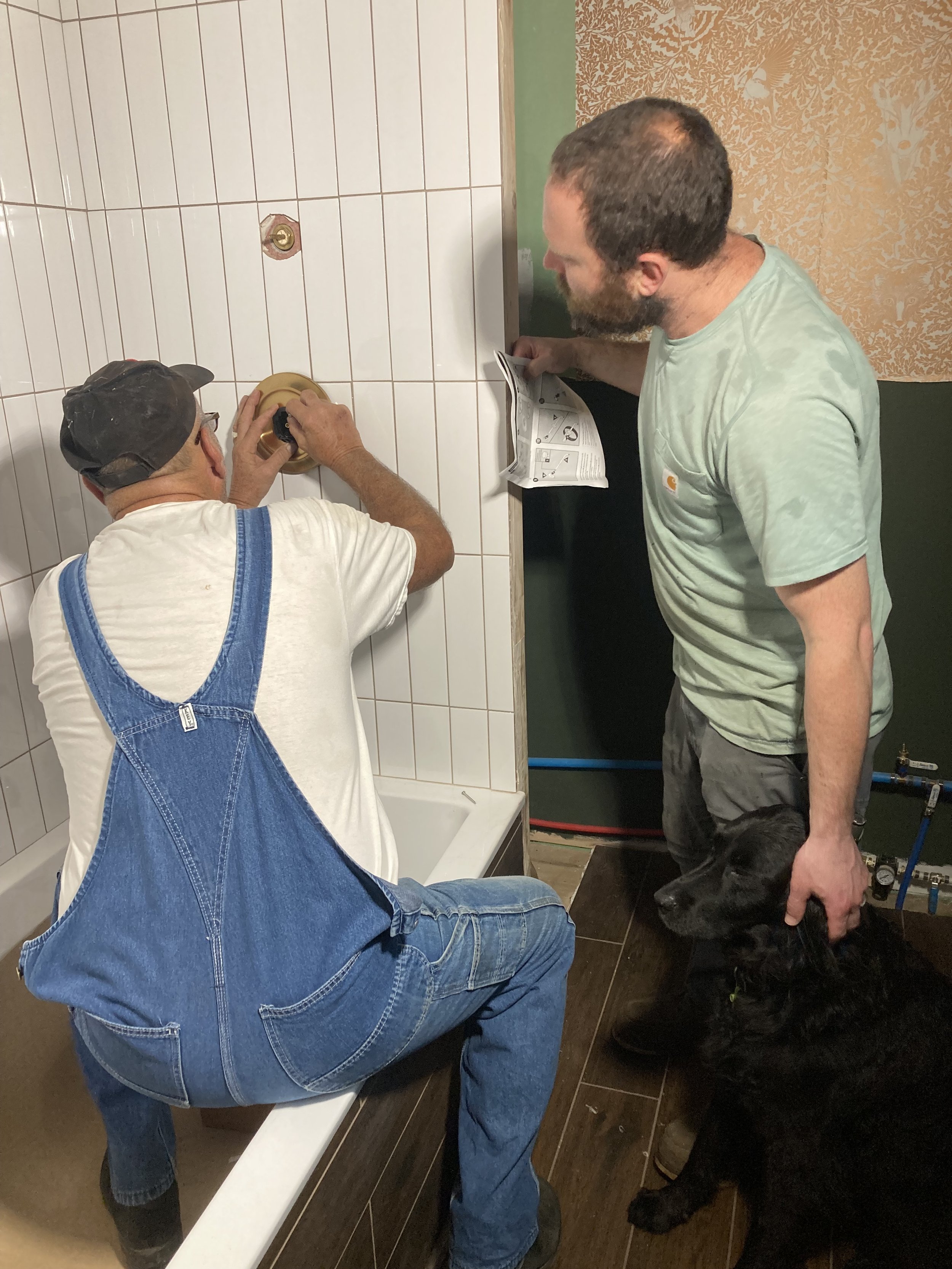
Nicholas and Heidi are proud that they brought a dream to life and, in the process, built an incredible and supportive community.
